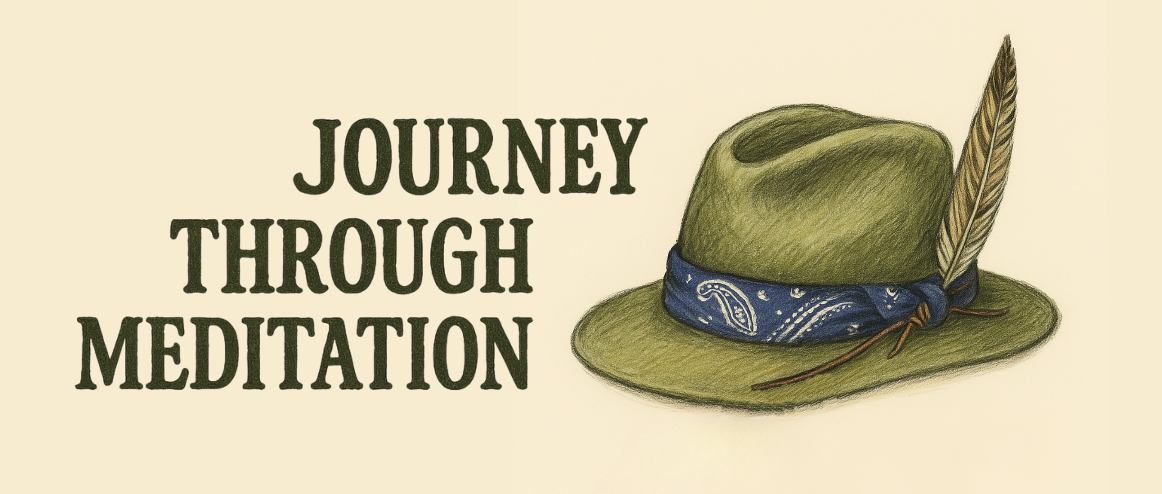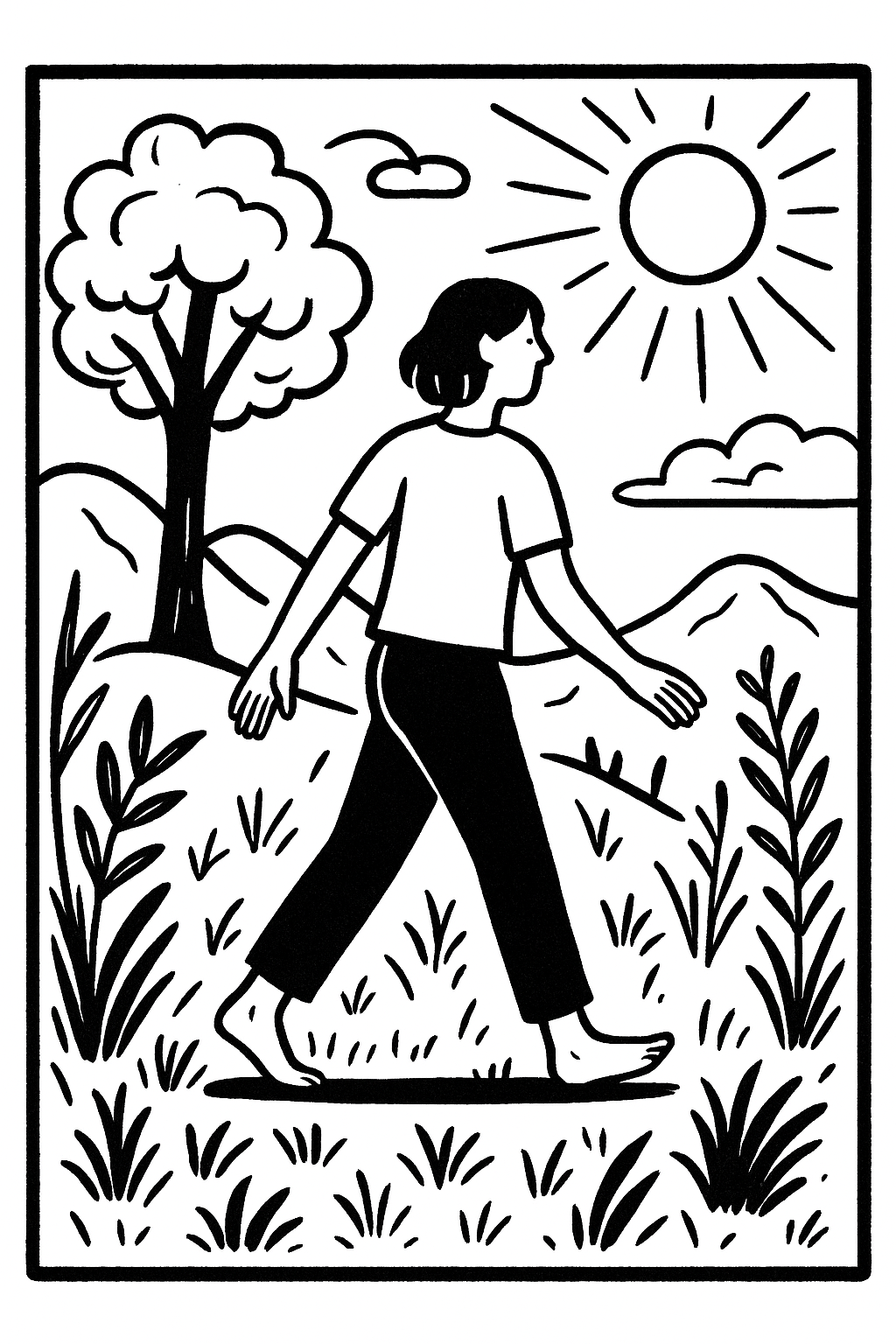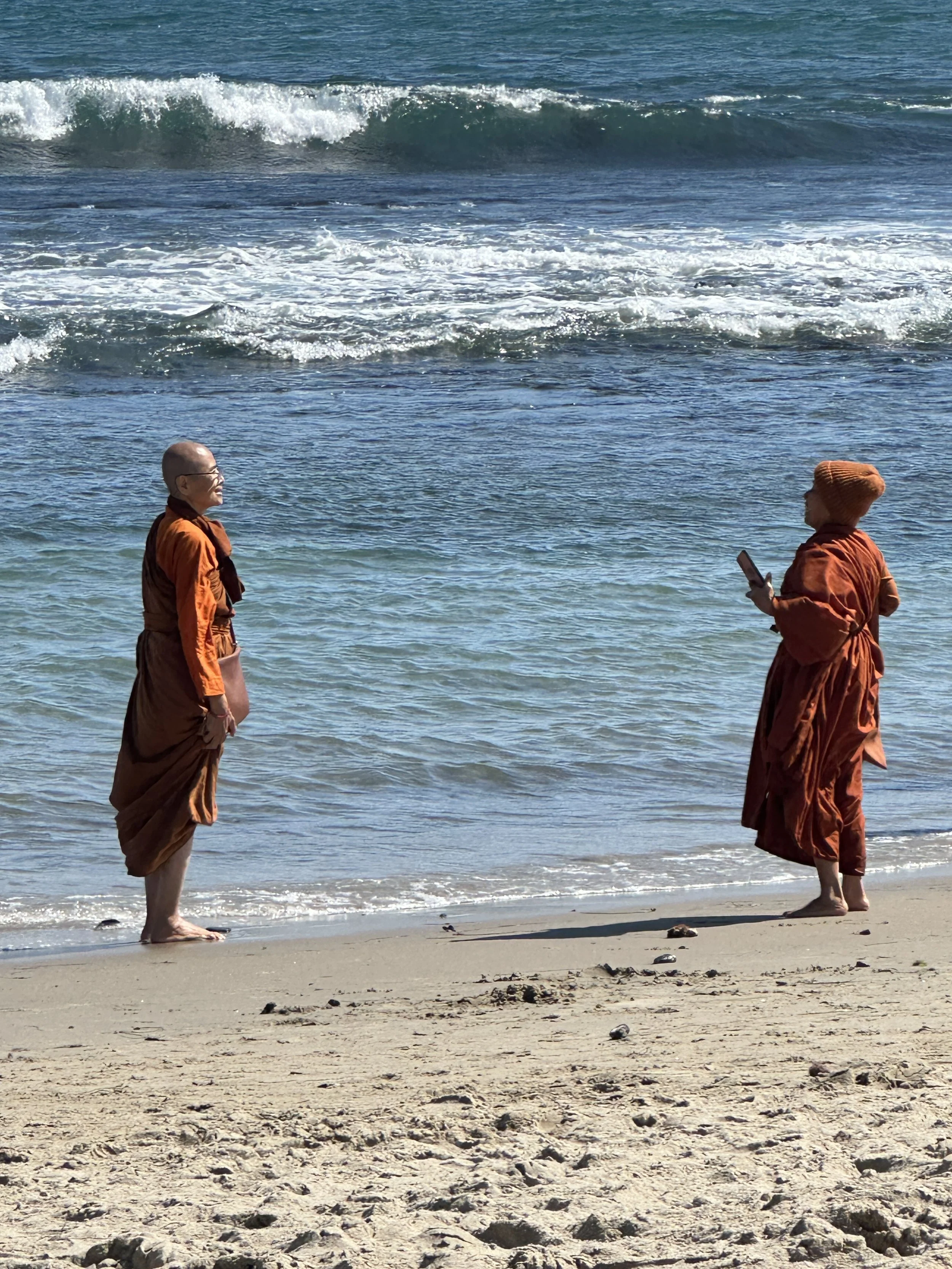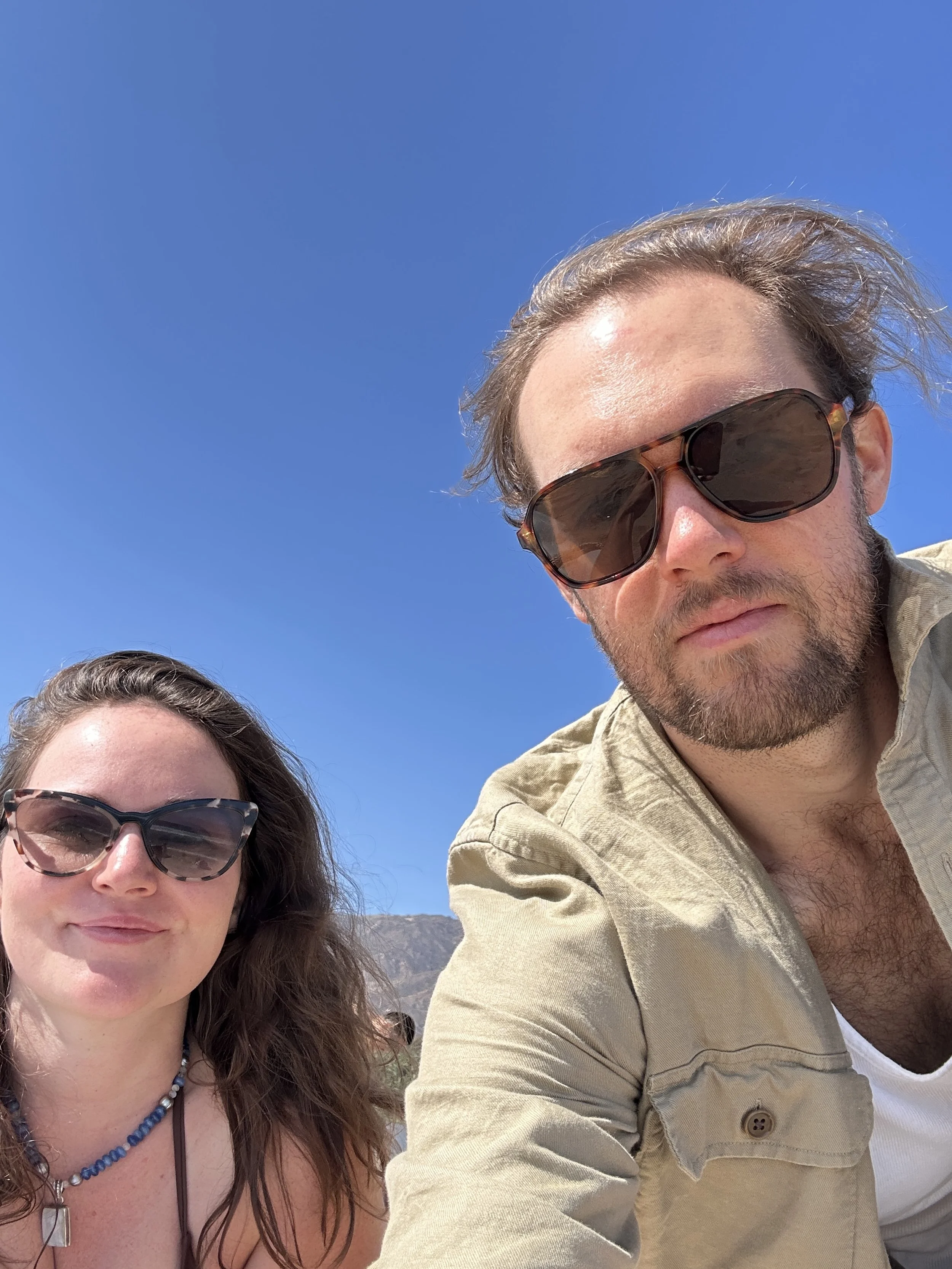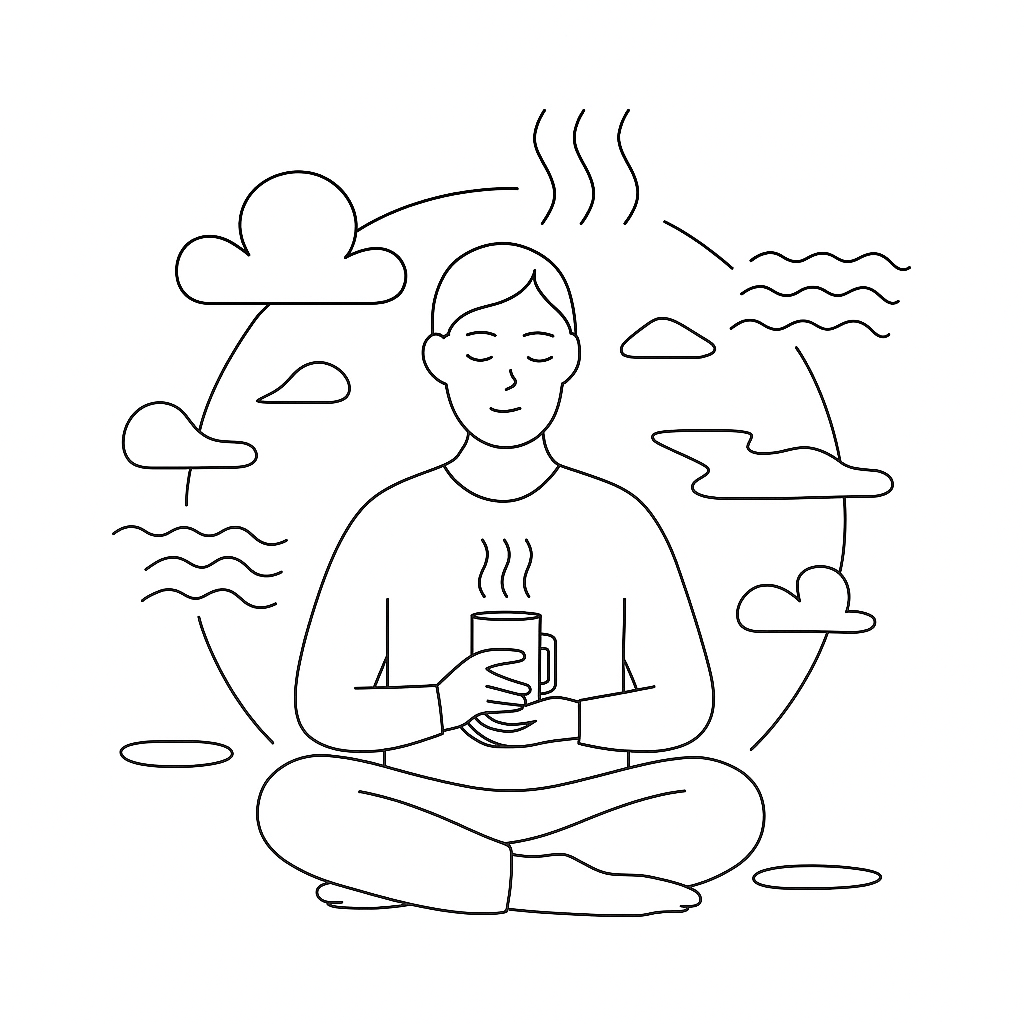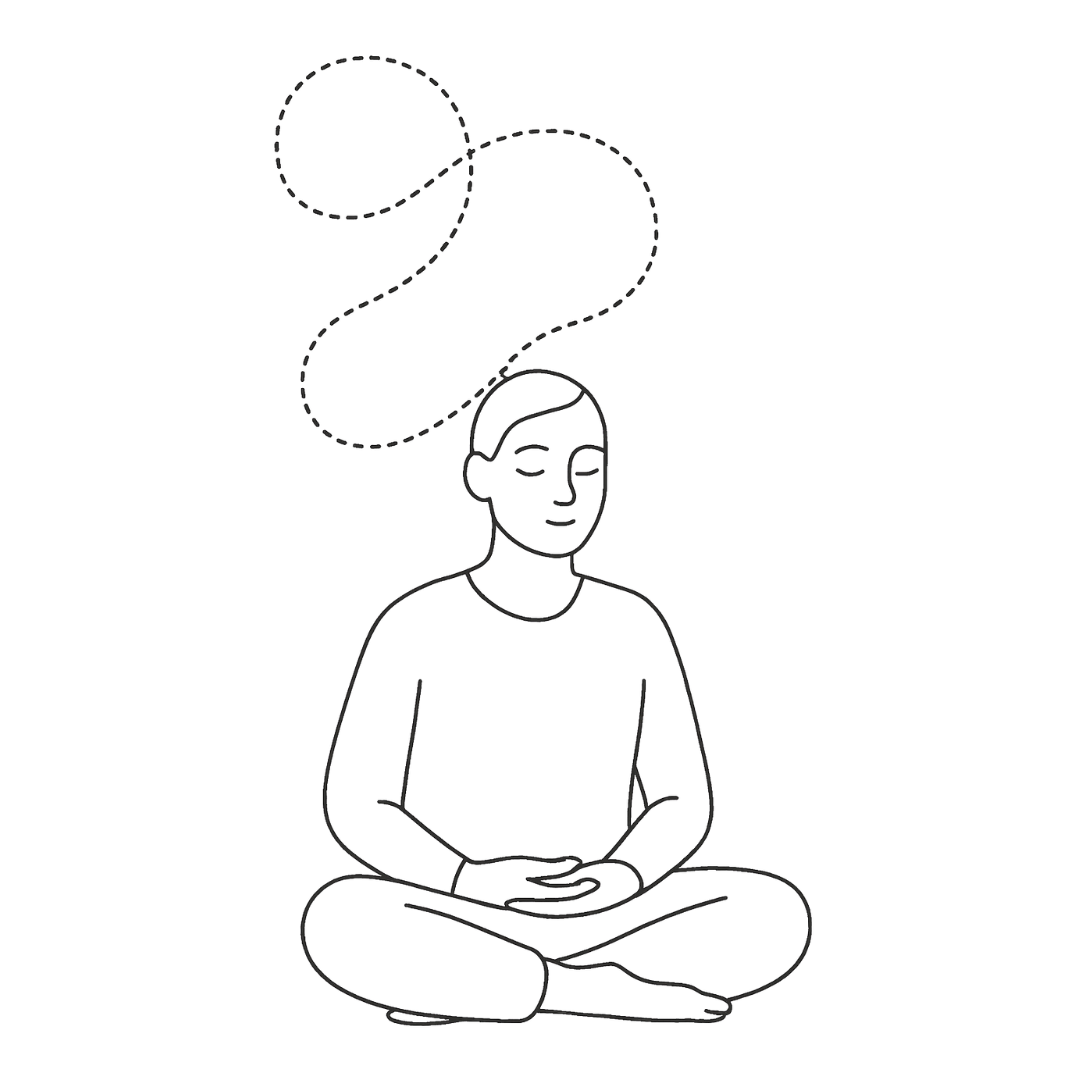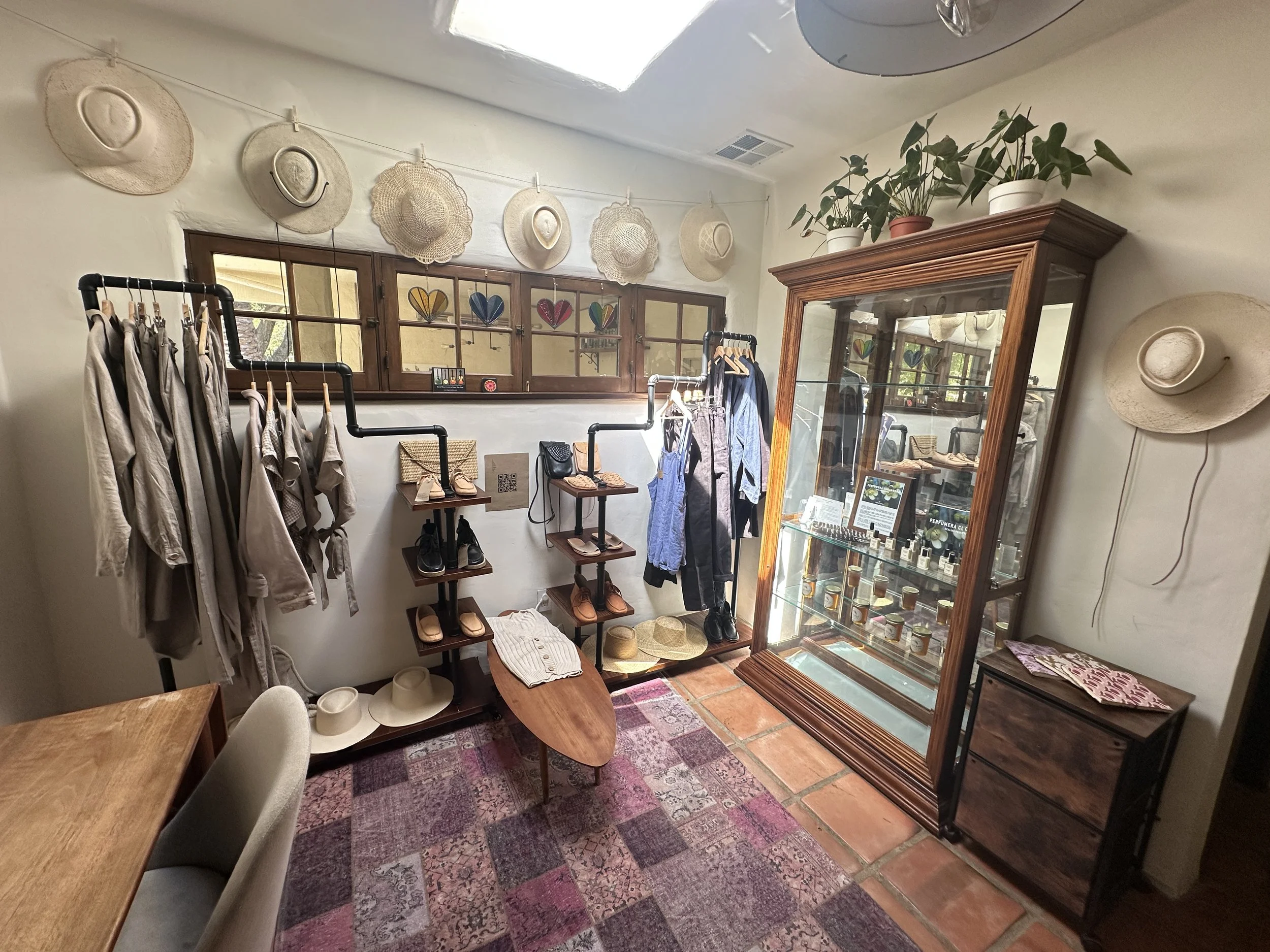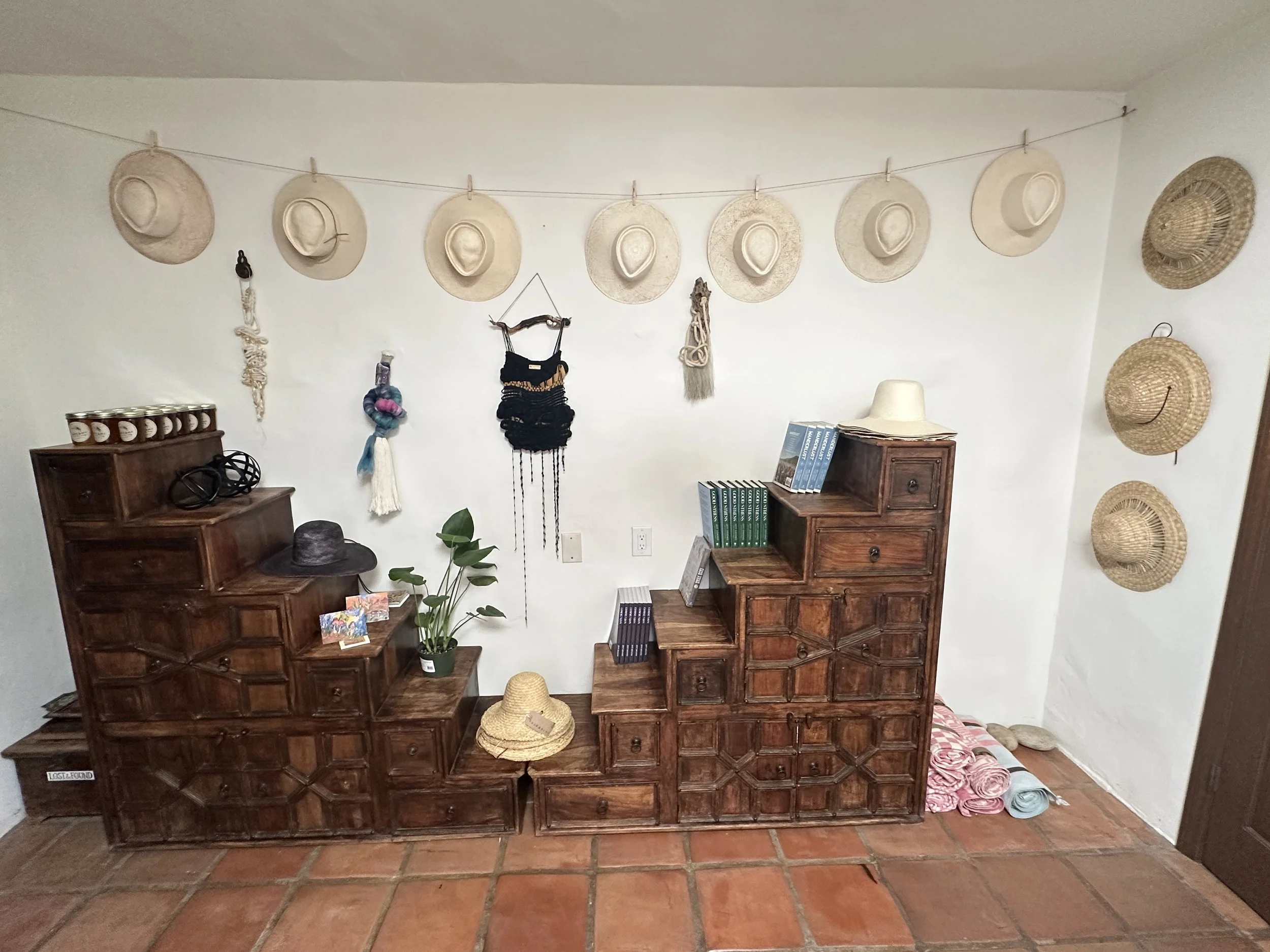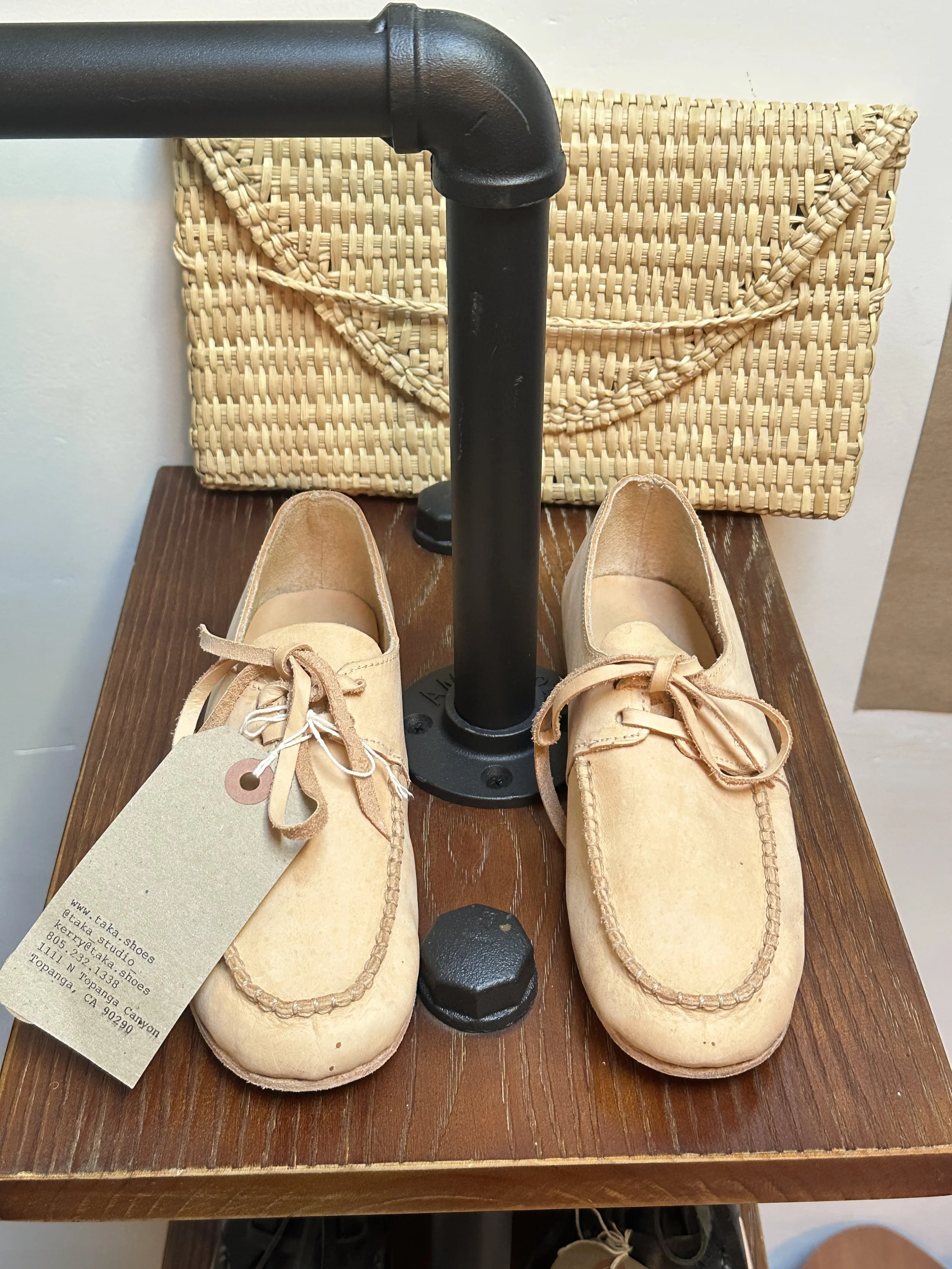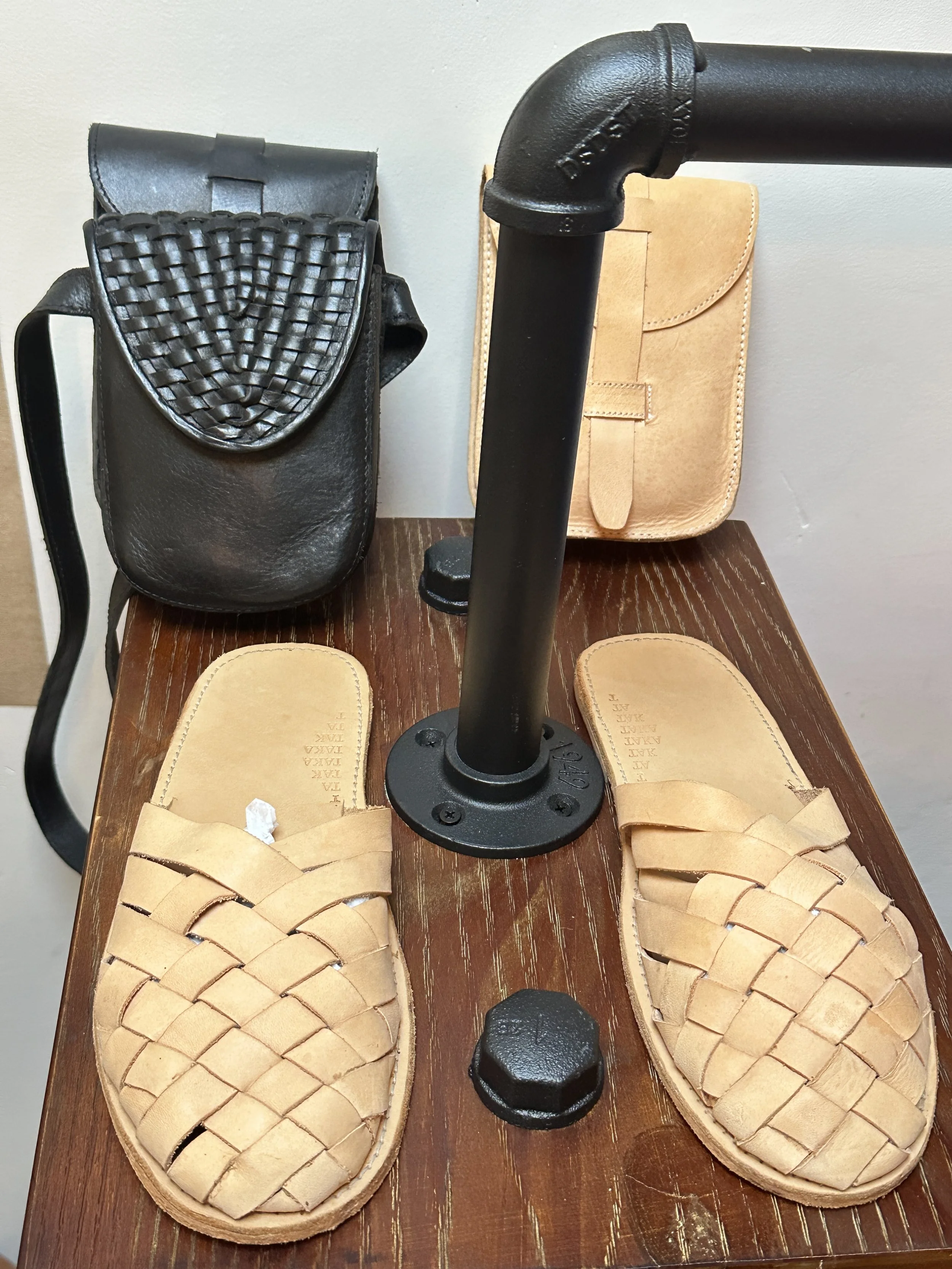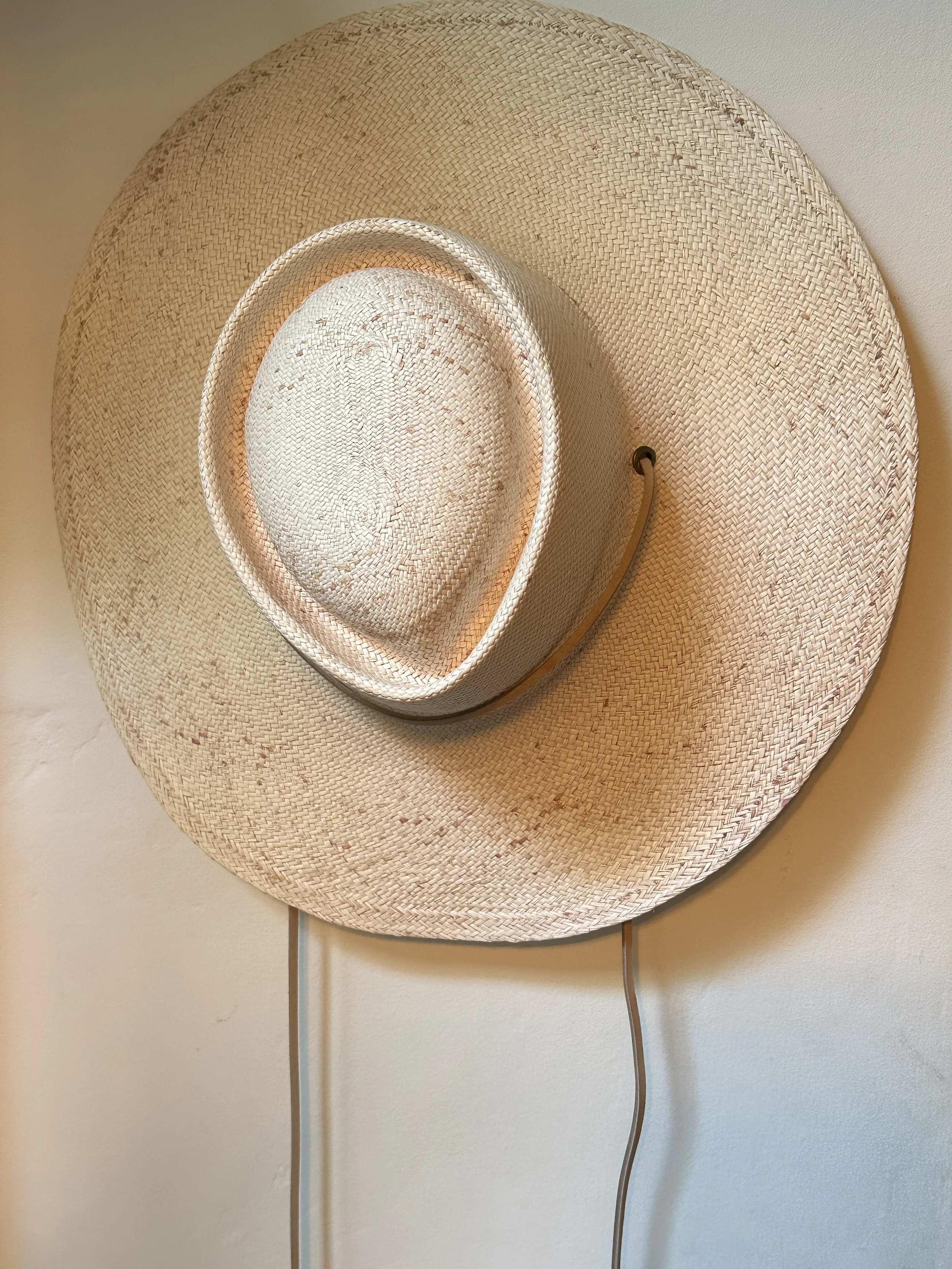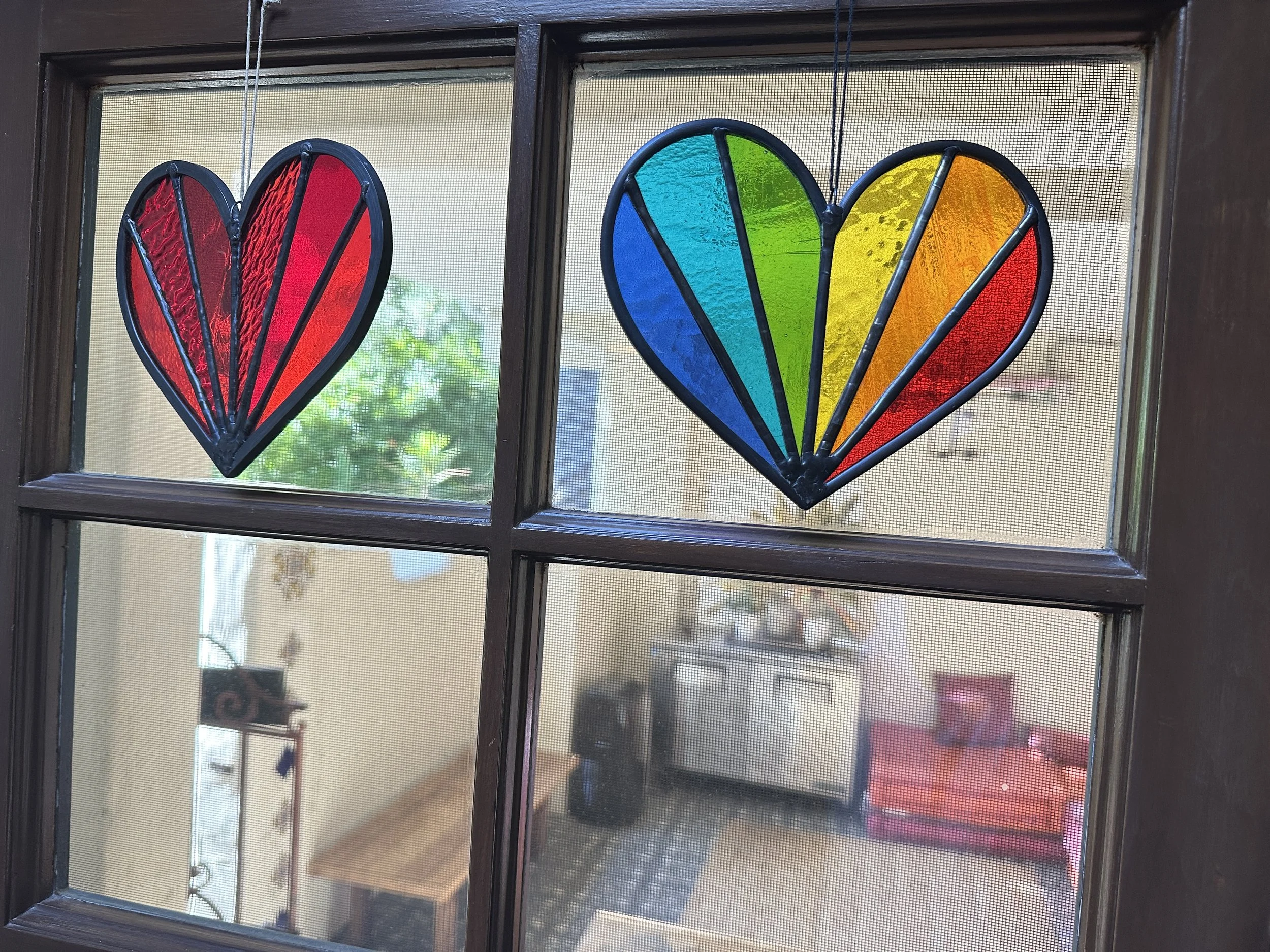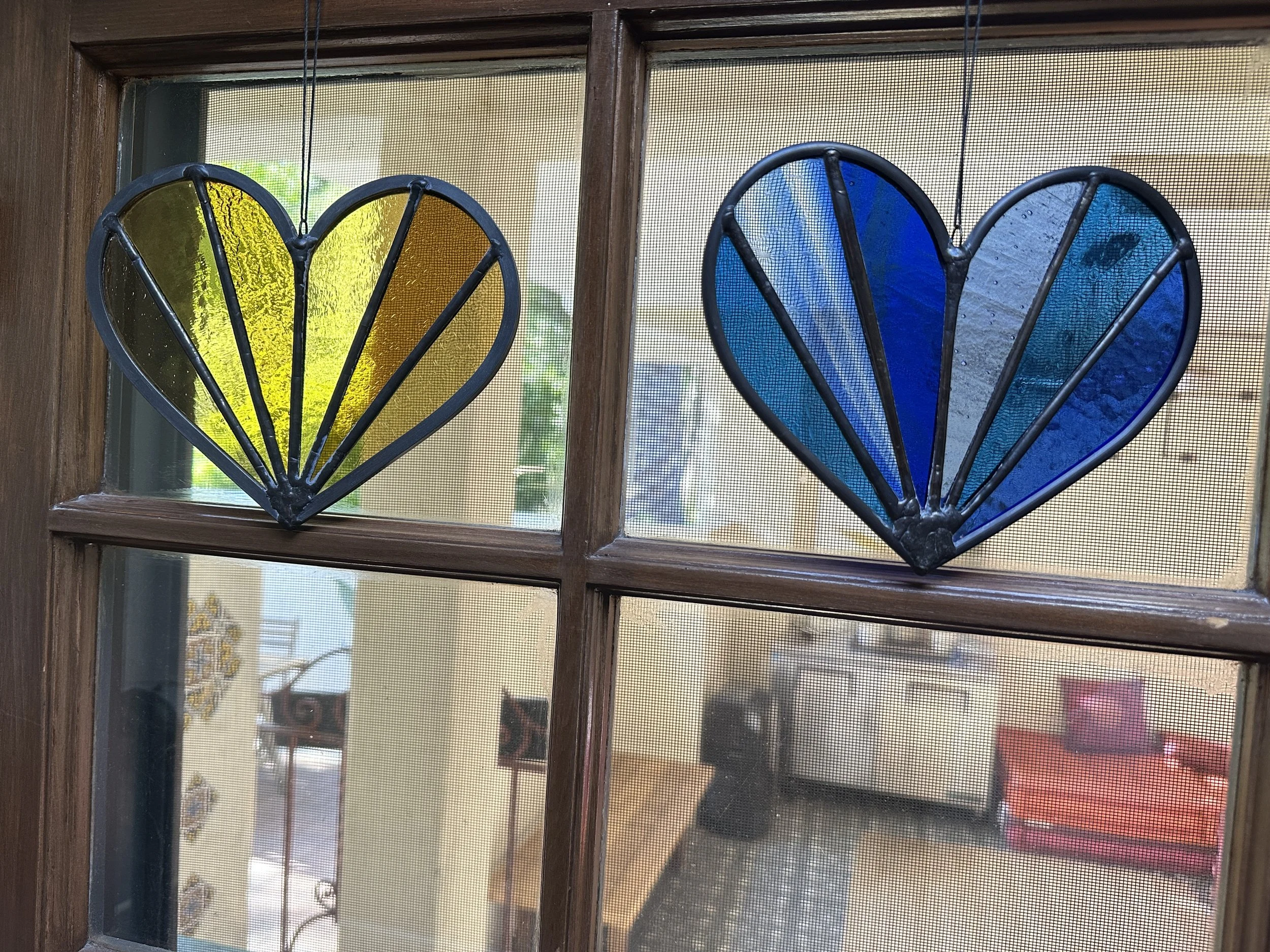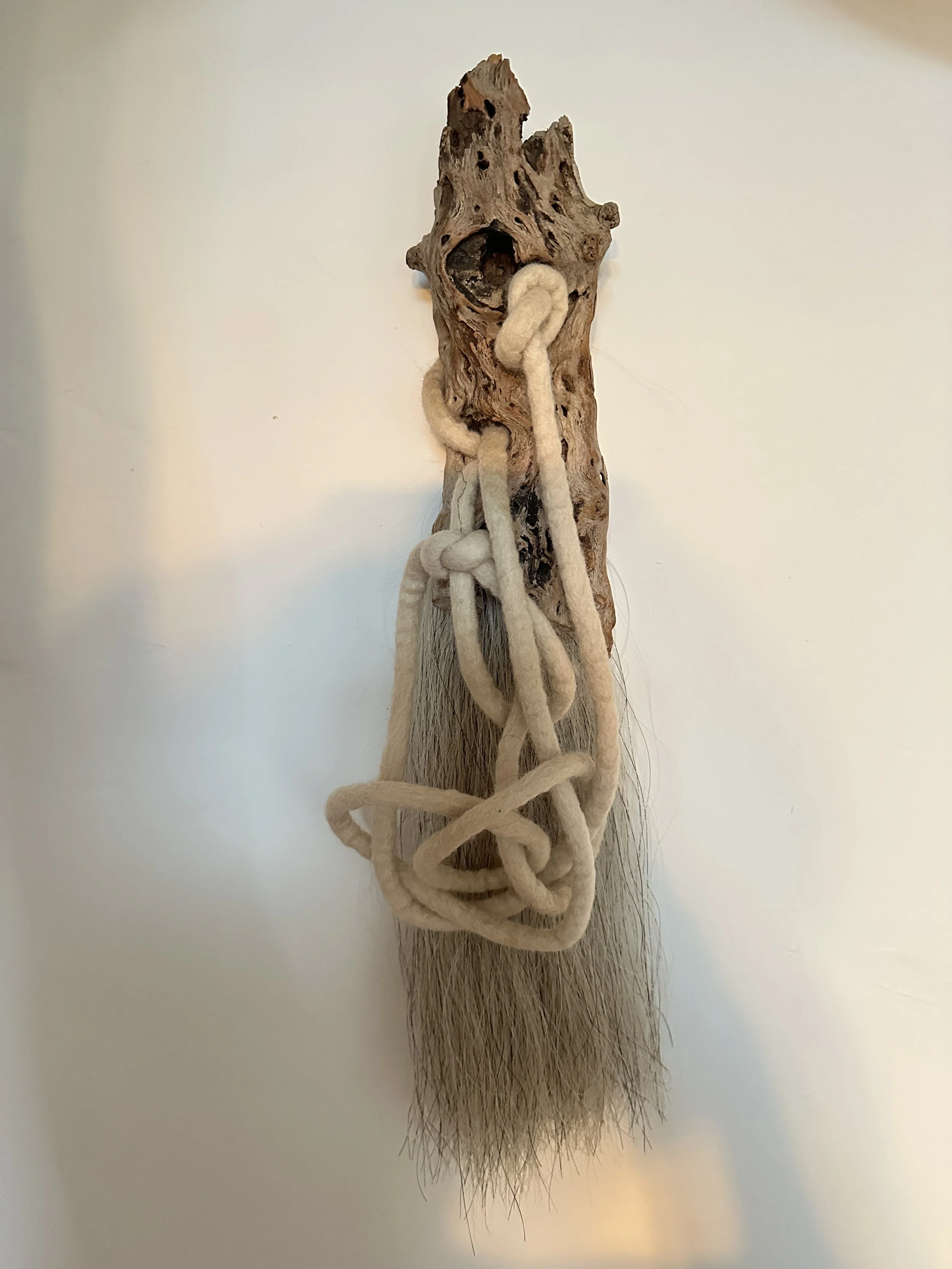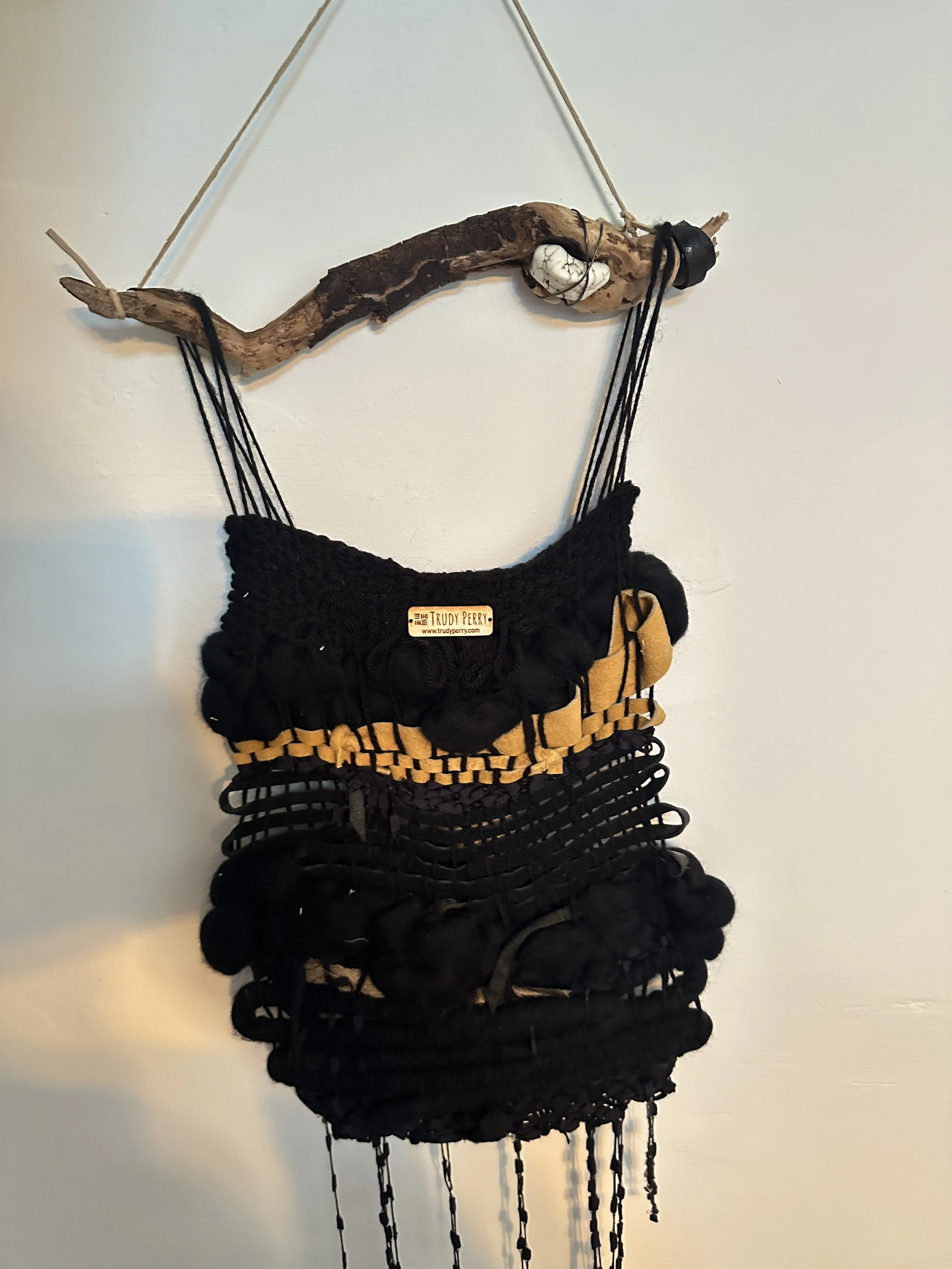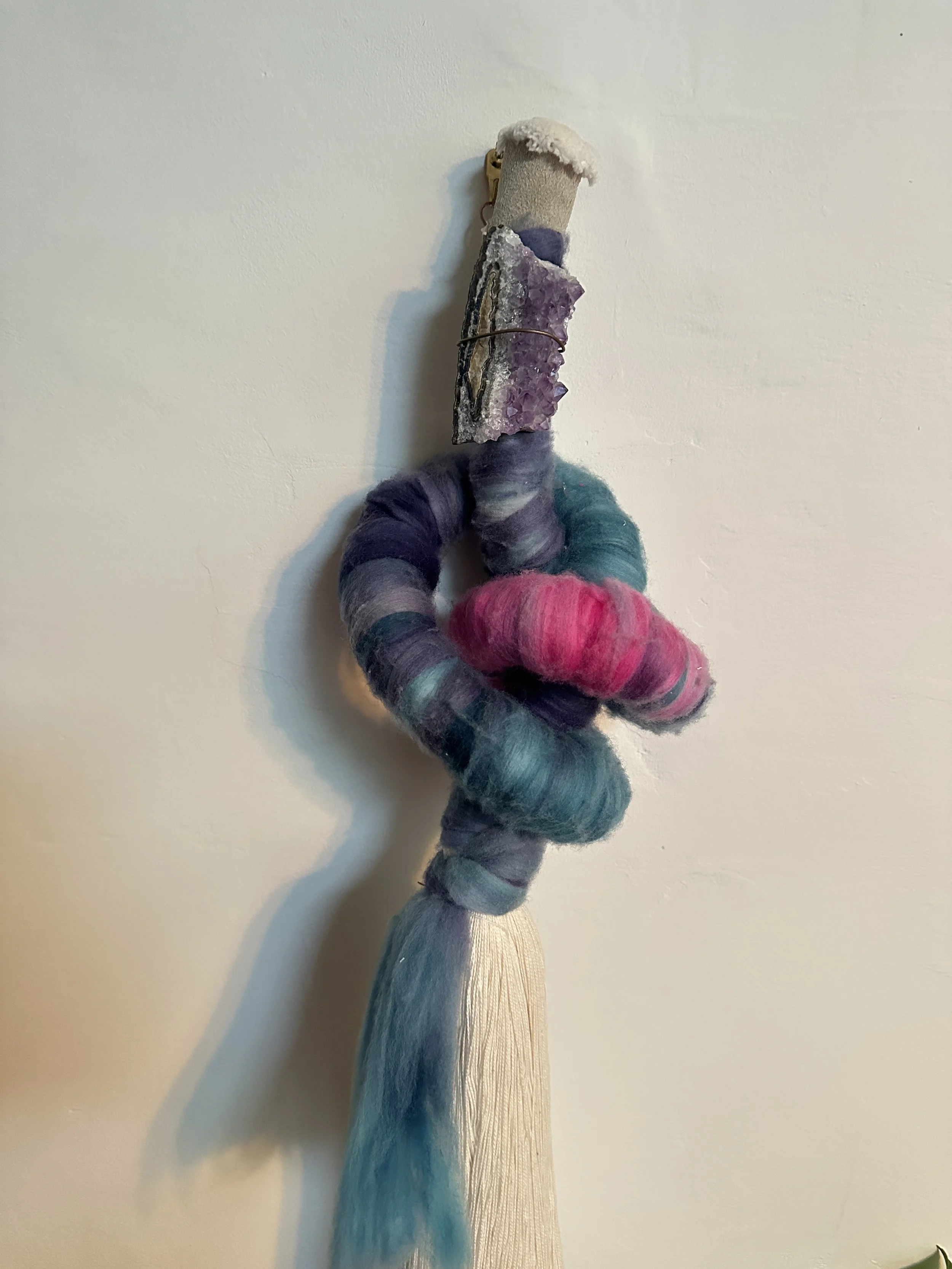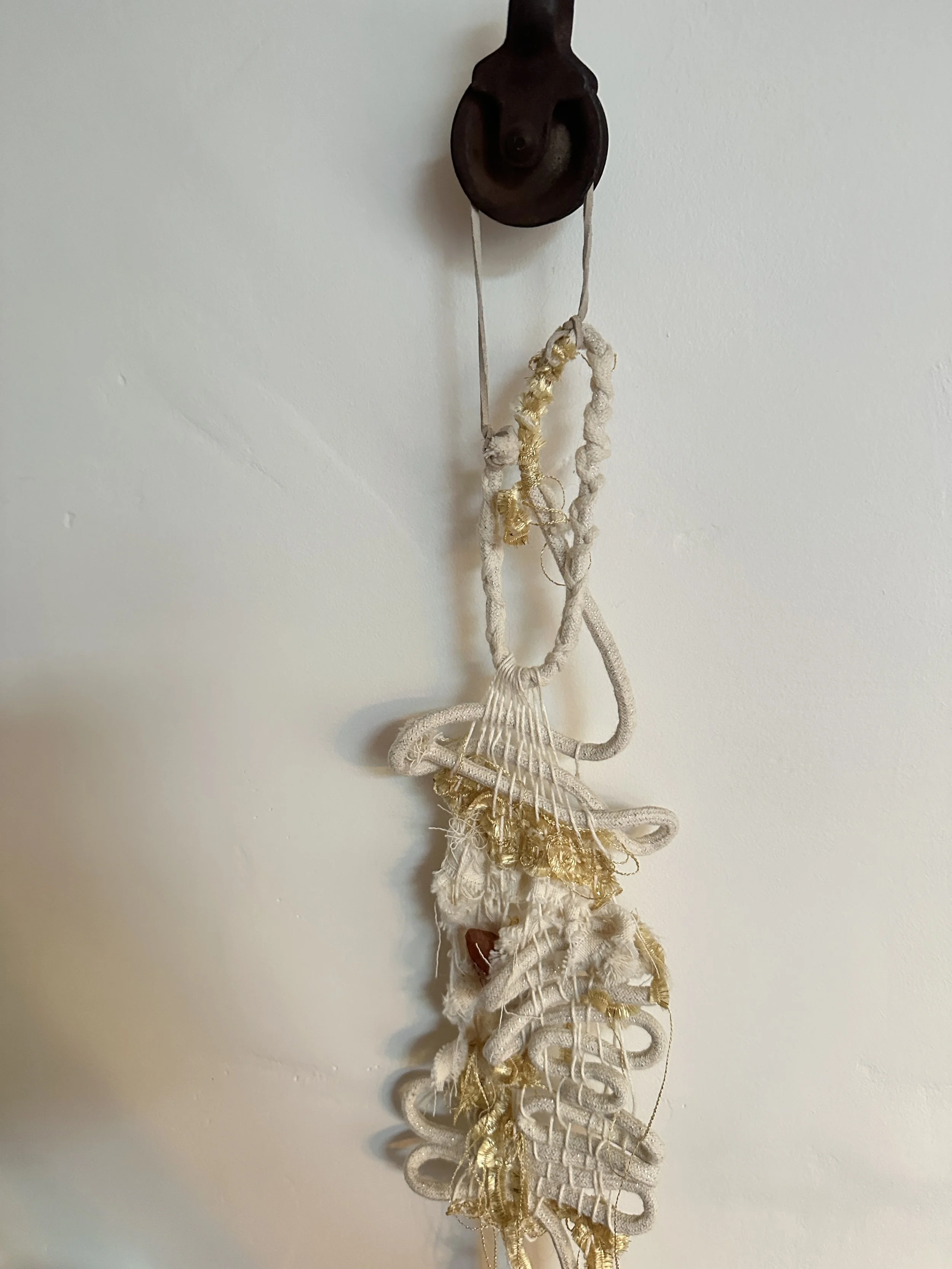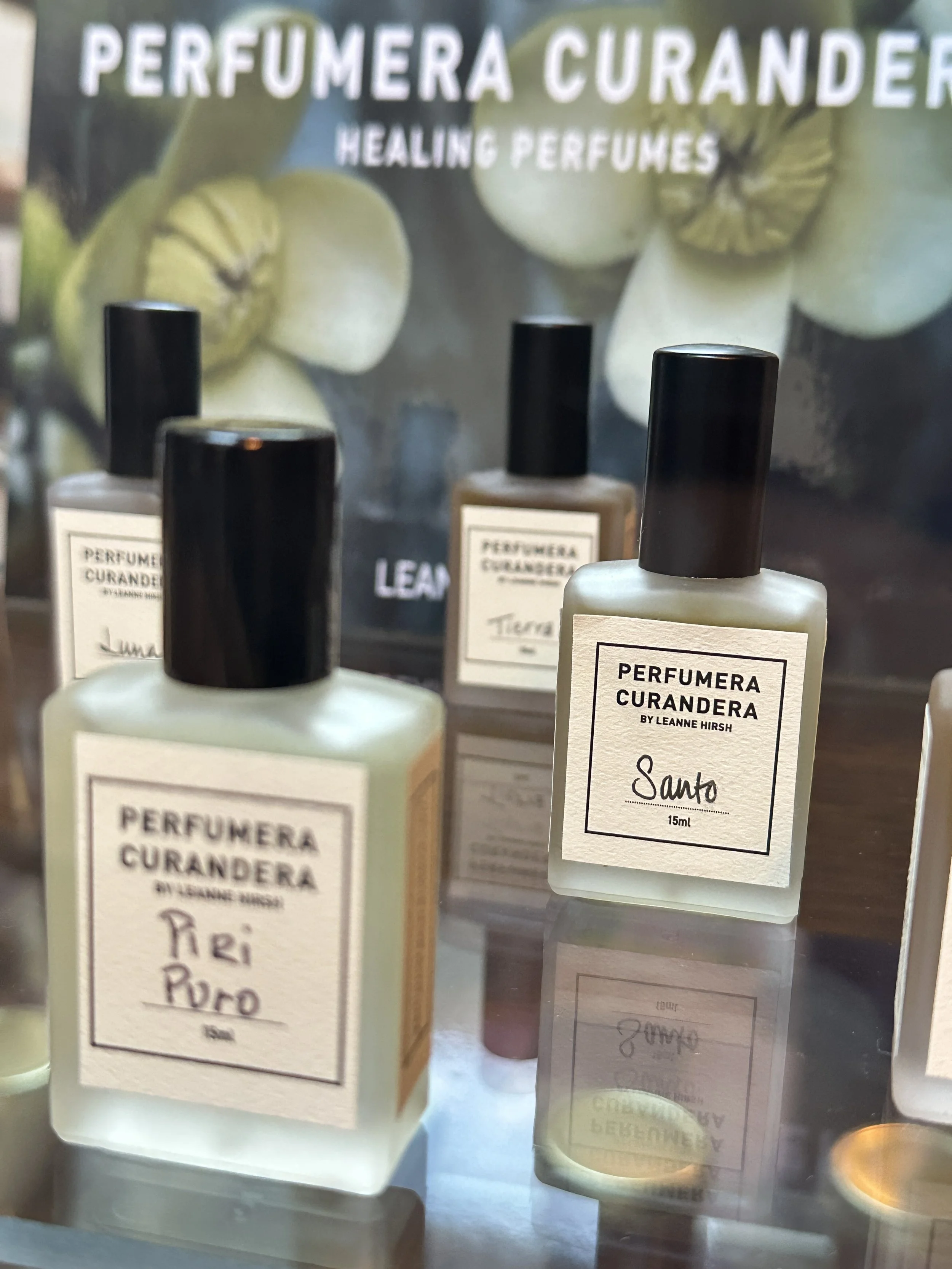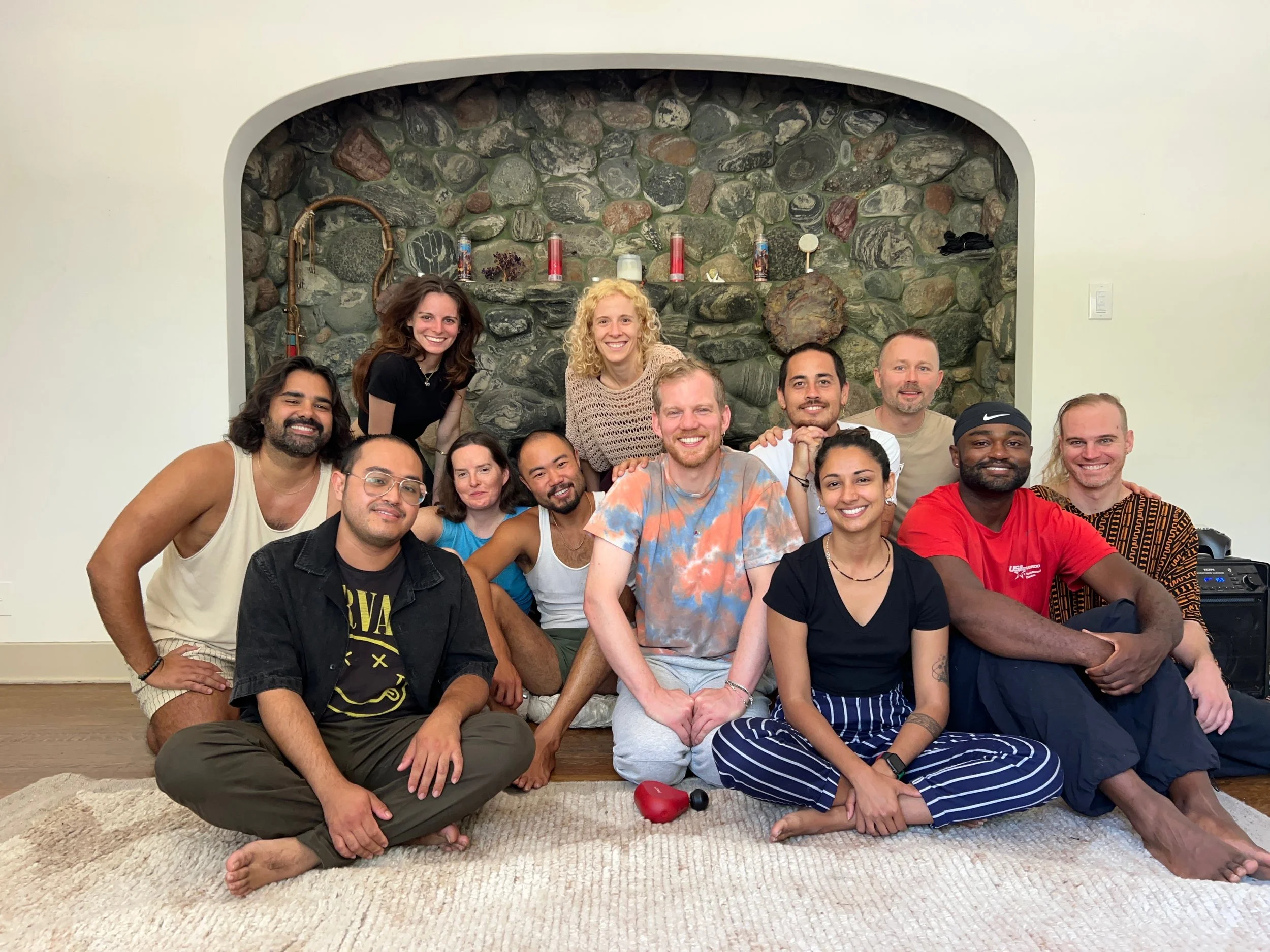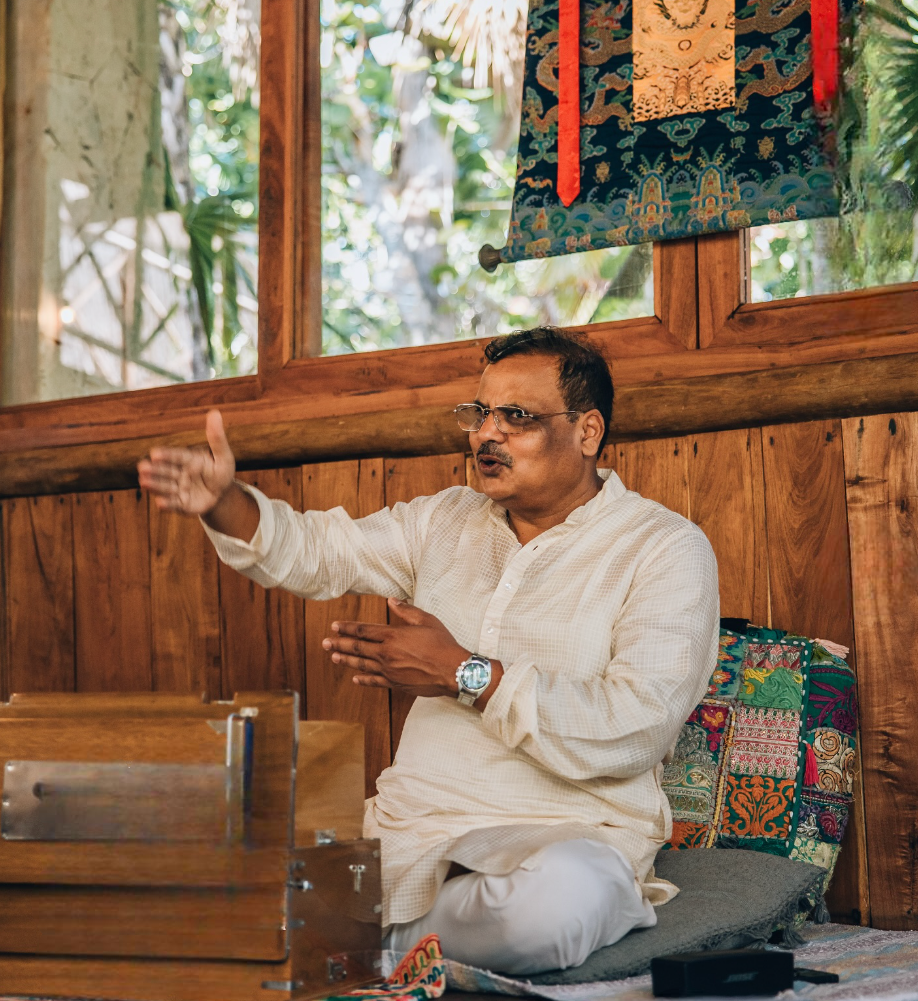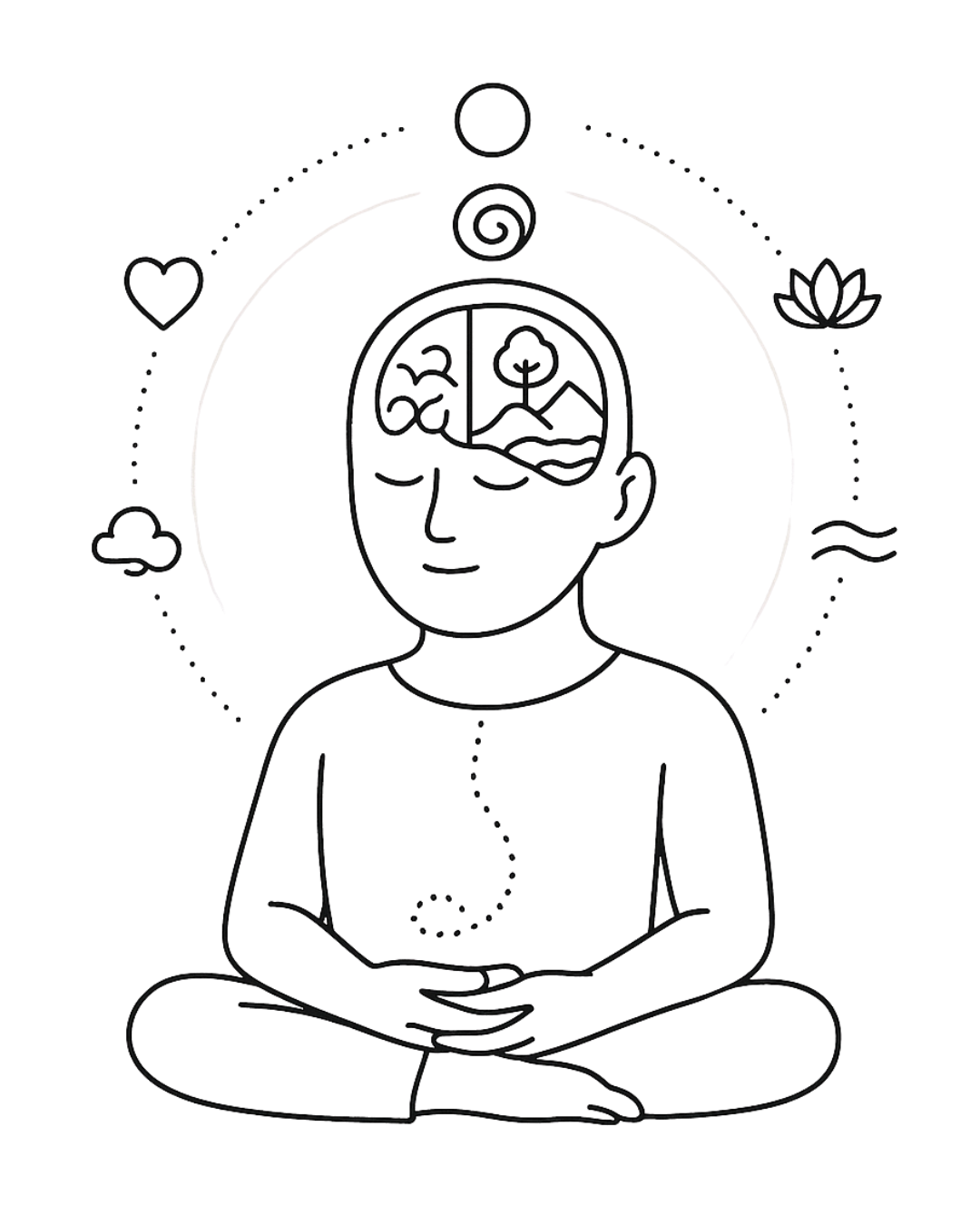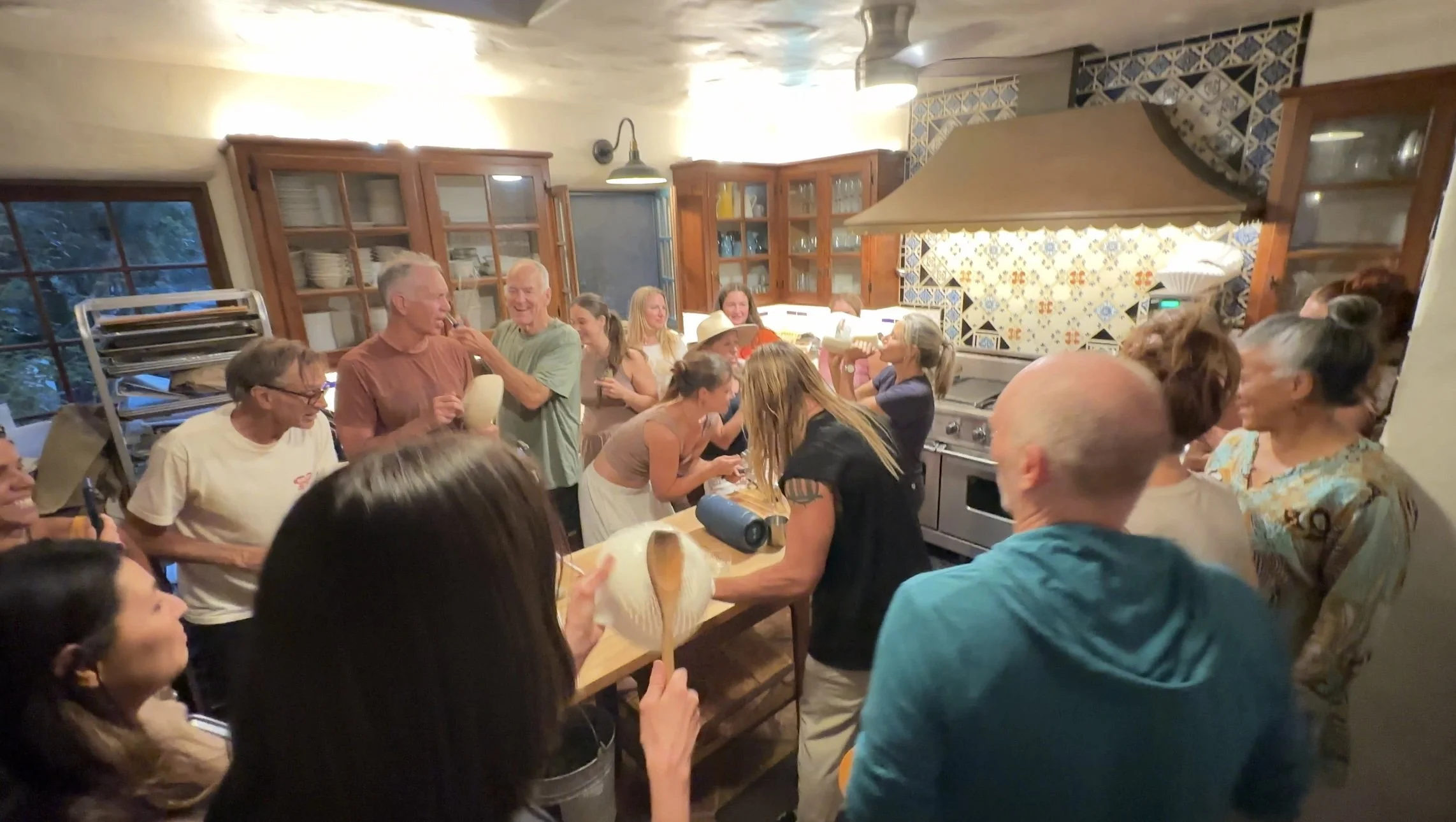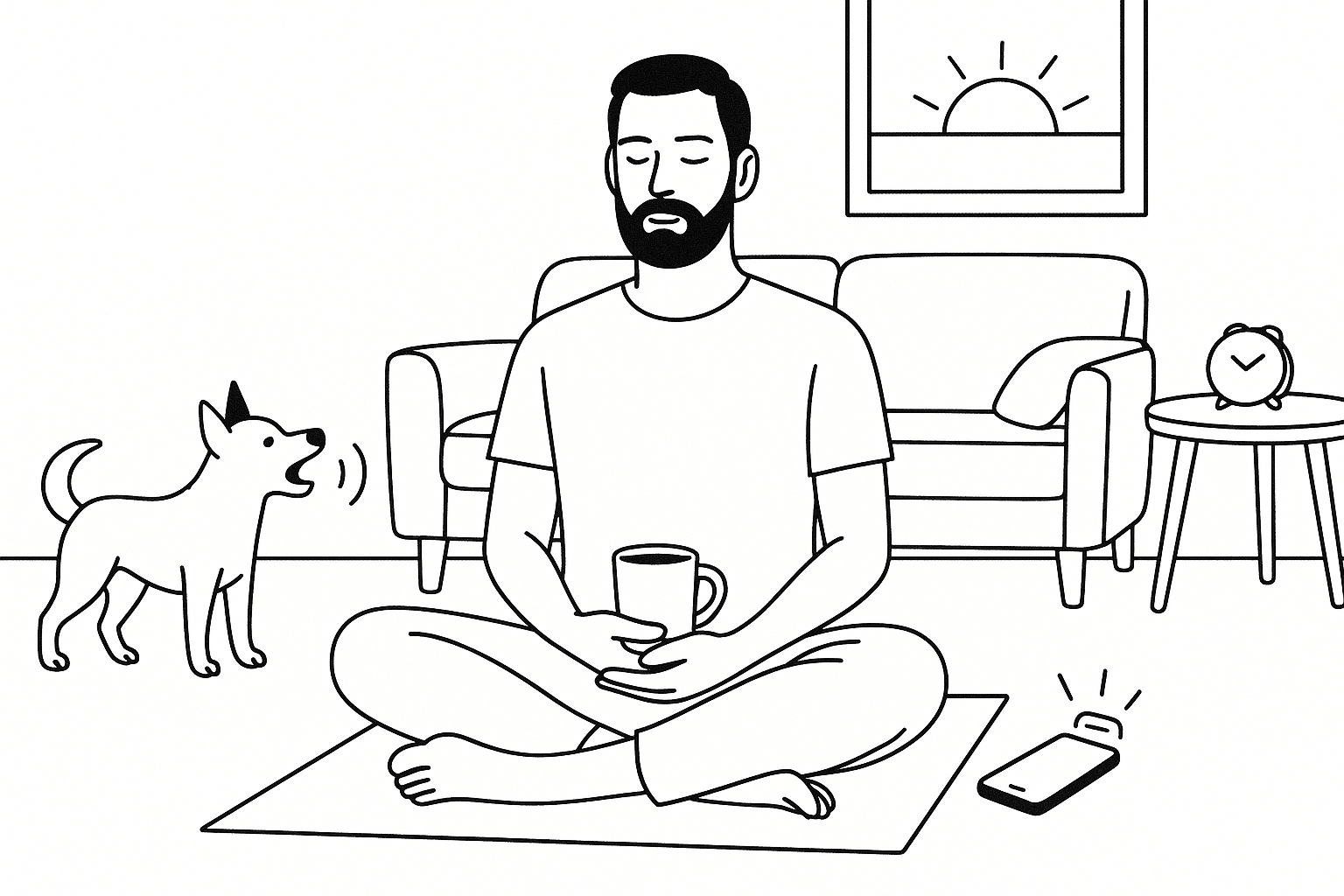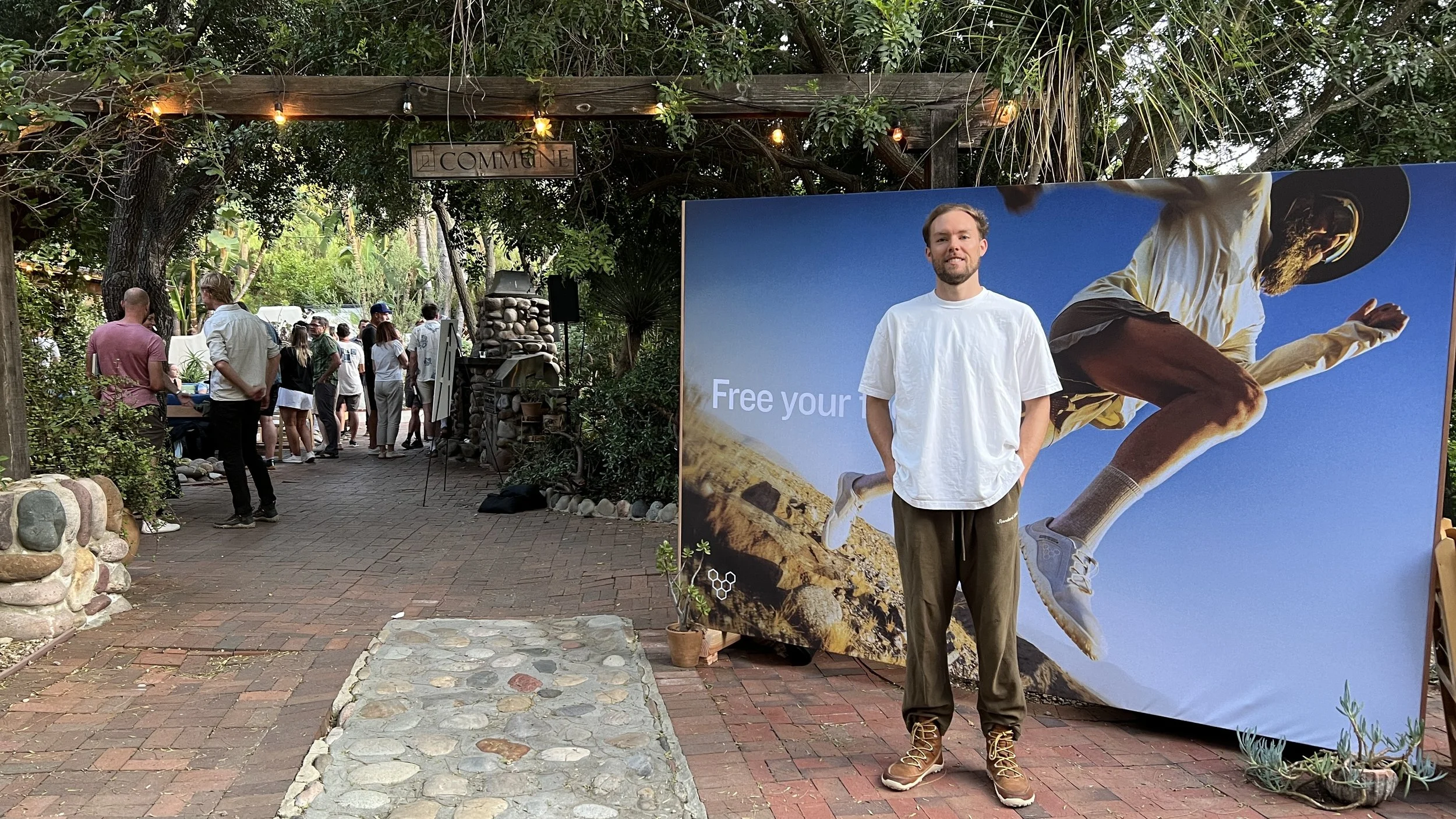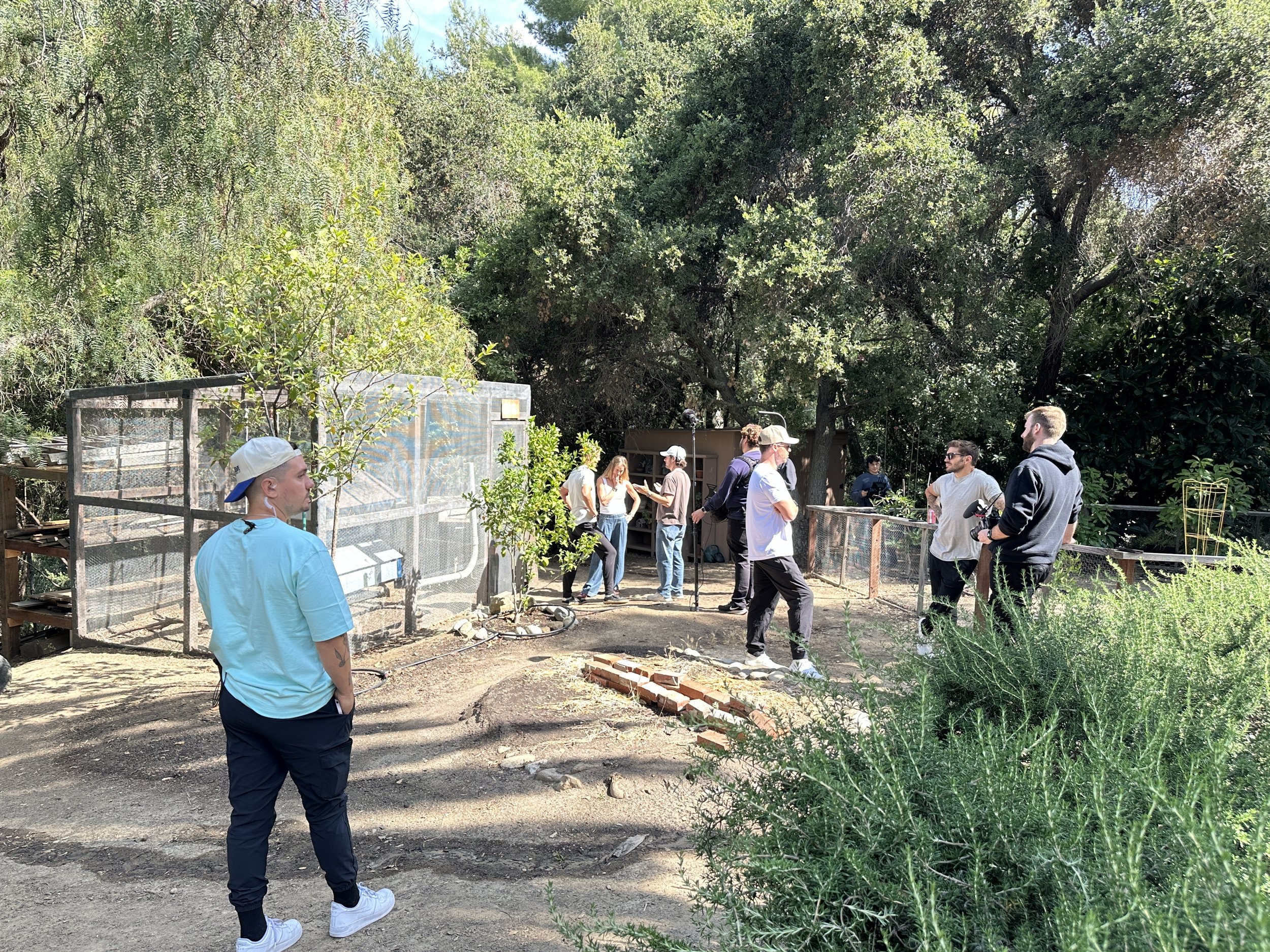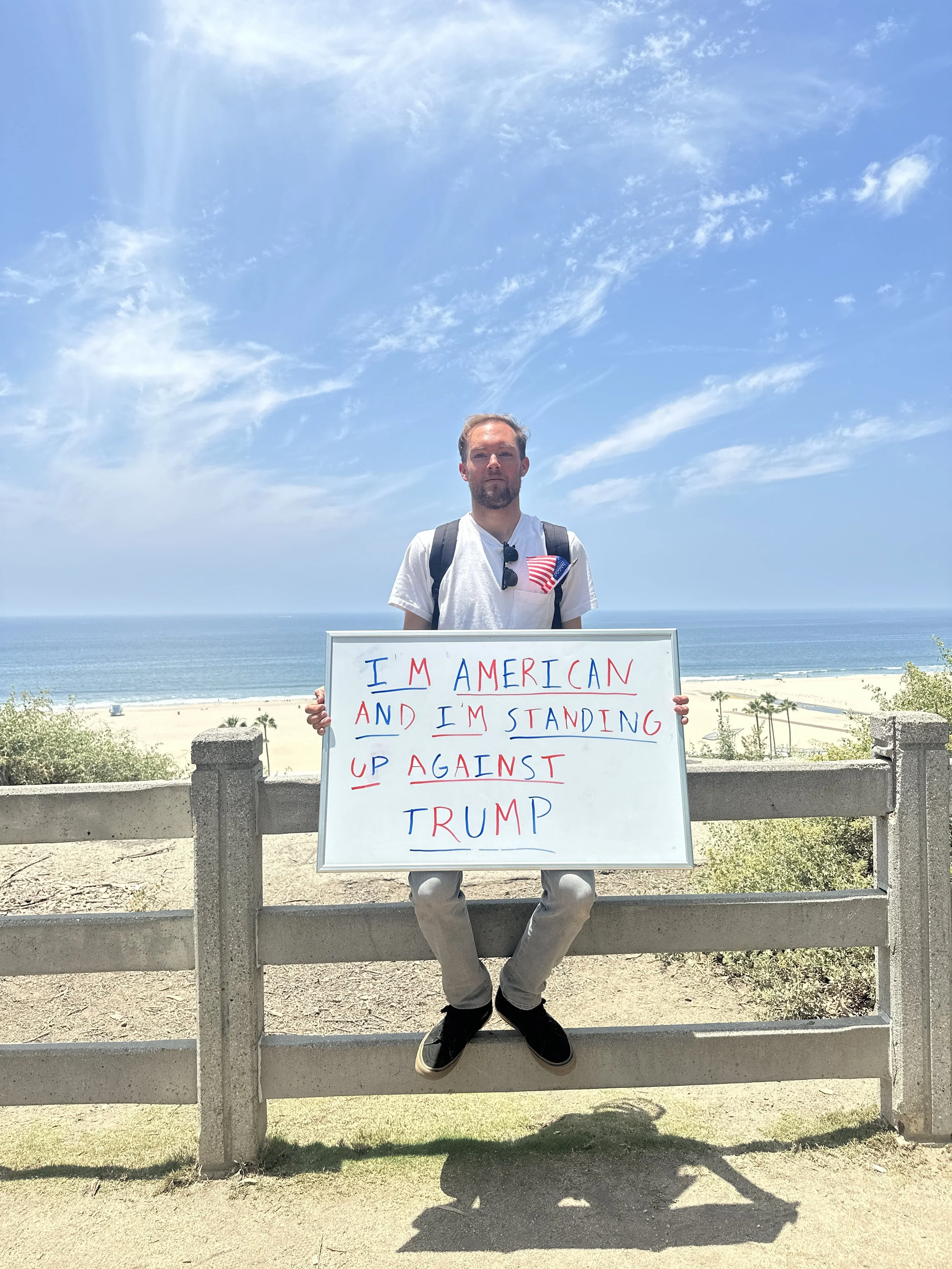Your Custom Text Here
Nature as a Teacher: Simple Ways to Reconnect and Restore
Modern life often pulls attention away from what matters most. Nature offers a simple, accessible way to return to calm and presence. This post shares easy, grounding practices you can integrate into your day—no forest retreat required.
Modern life is often defined by screens, schedules, and stimulation. But nature—with its rhythm, richness, and quiet presence—offers a natural path back to balance and clarity. Reconnecting with the outdoors doesn’t require a forest retreat or grand gesture. Small steps, taken daily, can awaken a deeper sense of calm and presence.
Why Nature Grounds Us
Nature holds a steady, unspoken wisdom. The rustle of leaves, the feel of breeze on skin, or the warmth of sunlight—all shift the nervous system toward ease. From urban parks to backyard lawns, natural environments invite attention away from the mind’s tension and into the body’s senses.
Evidence supports this. Forest bathing, or shinrin-yoku, originated in Japan and encourages sensory immersion in trees. Studies suggest it lowers stress, enhances mood, and supports immune health.
Simple Nature Practices to Try Anytime
These approachable practices bring the essence of nature into even the busiest day:
1. Sensory Walks
Walk slowly outdoors—through a park, garden, or even beside a window overlooking trees. Notice what’s seen, heard, smelled, and touched. This mindful presence shifts awareness from internal tension to external simplicity.
2. Elemental Meditation
Hold a natural object—like a smooth stone or a leaf—and observe it closely. Feel its texture, note its shape, smell it if possible. Let your breath soften as attention rests on something quiet and alive.
3. Sky-Gazing Pause
Sit or stand outside and look up. Observe clouds moving, light changing, sky shifting. Let that gentle gaze slow thought and open awareness. This tiny pause invites spaciousness into perception.
4. Grounding Breath
Stand barefoot if possible or place a hand on natural ground. Inhale deeply, imagining roots growing from your feet into the earth. Exhale tension downward. This simple ritual aligns breath with nature’s support.
Nature and Personal Healing
Connection with nature doesn’t just relax—it can heal. Time spent outdoors enhances curiosity, uplifts mood, and invites a sense of belonging. Attention shifts from forced productivity to participation with something larger, steadier, and alive.
Bringing Nature into Daily Life
There's no need for grand outdoor plans. Small, consistent connections build a rooted sense of peace:
Open a window and breathe in fresh air.
Keep a plant or natural object nearby.
Spend a few mindful breaths with the sky above.
Turn a solitary walk into a sensory exploration.
These simple invitations help nature become an ever-present companion—not a luxury, but a living practice.
The Journey Through Meditation eBook offers further nature-based meditations and practices to help you return to body, rhythm, and inner clarity. Grab a free chapter of the book here to explore deeper ways to connect through the natural world.
The Peace Beyond the Robes
A beach day isn’t always just a beach day. In the chaos of late departures, crowded sand, and sunscreen in my eyes, I found a quiet teaching about spiritual devotion—and why our real temple might just be the messy, imperfect life we live every day.
What started as a beach day ended up being a quiet teacher. This past weekend, Katy and I took a trip to Malibu Lagoon State Beach—a spontaneous adventure that ended up teaching us more than we expected about timing, patience, and the kind of spiritual path that feels right for us.
The Missteps That Make the Day
We started slow, letting ourselves enjoy a quiet morning. That part was great. But by the time we left, we were already behind schedule. We debated which beach to go to, drove in circles for a while, and when we finally landed on one, it was completely packed. The energy was chaotic, not the relaxing day we’d envisioned. So we pivoted.
A Moment of Recalibration
We stopped at Malibu Country Mart for lunch—a place that helped us reset. We found a shaded table, ordered food, and watched the world go by. Afterward, we made our way to Malibu Lagoon across the street. There, the day started to open up.
We sat on the warm sand, watched the waves, and let the tension of the morning dissolve. I jumped into the ocean, letting the salt water cleanse me. I’ve always felt that nothing beats the feeling of swimming in a natural body of water—so much more nourishing than chlorine.
Orange Robes and Inner Reflections
At one point, two Buddhist monks in orange robes walked along the shore. They stood out.
I didn’t feel drawn to the monastic path in that moment, but I did feel a quiet question arise: Am I truly devoted to my own spiritual path? But almost as quickly, another part of me answered: That’s not my path—and it never has been.
A teacher once told me that 99% of monks aren’t actually enlightened. That always stuck with me.
The real work, for most of us, isn’t in removing ourselves from society. It’s in staying in it, and letting our relationships, jobs, and everyday struggles refine us.
Enlightenment, I believe, isn’t about isolating ourselves from challenge; it’s about meeting those challenges with presence, again and again.
The Real Practice
That day, even in the beauty of the beach, I still felt little triggers—impatience, indecision, frustration.
At one point, the sun was shining a little too bright, the sunscreen was burning my eyes, and it had become quite windy which was causing me to feel cold after getting out of the water.
But instead of wishing them away, I did my best to make them part of the practice. Because if you can stay grounded when things feel messy, that’s the kind of peace that’s worth something.
Monks may live in temples and gardens, but we live in traffic and crowded beaches. And maybe that’s where our temple is meant to be.
Unwind Your Mind: Simple Practices to Melt Away Daily Stress
Stress can feel like an uninvited guest in everyday life, but it doesn’t have to stay. This guide shares simple yet powerful ways to invite more calm into your day. Learn easy, natural habits to release tension and make relaxation part of your routine.
Stress is a natural part of life, but when it lingers too long, it can cloud clarity, drain energy, and impact well-being. The good news is that small, intentional practices can help ease the pressure and create space for calm. Whether it’s a busy day at work, family responsibilities, or unexpected life changes, making time for stress relief isn’t just self-care — it’s essential for a balanced life.
Why Stress Relief Matters
Prolonged stress can affect both body and mind, leading to tension, fatigue, mood swings, and even physical discomfort. By practicing regular relaxation techniques, the nervous system has the chance to shift from high alert into a state of rest and recovery. This allows the body to heal, the mind to focus, and emotions to stabilize.
Simple Practices to Ease Stress
1. Pause and Breathe
A few slow, intentional breaths can calm the mind and signal the body to relax. Try inhaling through the nose for a count of four, holding for a moment, and exhaling slowly through the mouth for a count of six. Even two minutes of focused breathing can make a difference.
2. Create a Quiet Space
Having a dedicated spot for calm — whether it’s a corner of a room, a seat by a window, or a park bench — can help train the mind to associate that space with relaxation. Keep it free from distractions and filled with items that inspire peace, such as soft lighting or a comforting scent.
3. Move with Intention
Gentle stretching, walking, or slow yoga can release physical tension and improve circulation. Movement doesn’t have to be intense to be effective — the key is to move with awareness, paying attention to how the body feels.
4. Practice Mindful Moments
Mindfulness can be as simple as noticing the taste of tea, the sound of leaves rustling, or the feeling of warm water on your hands. These small pauses bring awareness to the present moment, which helps quiet anxious thoughts about the past or future.
5. Disconnect to Reconnect
Taking short breaks from screens and notifications can reduce mental overload. Use that time to connect with nature, read a book, or simply sit in silence. This reset helps restore focus and energy.
Building Stress Relief into Daily Life
The most effective stress-relief practices are the ones that can be woven into daily routines. Instead of waiting for stress to peak, try incorporating calming moments throughout the day — a quick stretch in the morning, mindful breathing before meetings, or a quiet reflection before bed. Over time, these practices create a strong foundation of resilience.
Final Thoughts
Stress may be unavoidable, but how it’s managed can transform its impact. By pausing, breathing, moving, and creating moments of quiet, a sense of balance and clarity can be restored. These simple practices can be done anytime, anywhere, offering a gentle reminder that calm is always within reach.
For deeper guidance on relaxation and mindfulness, get our free eBook: Journey Through Meditation — A simple guide to help build a daily meditation habit and reduce stress naturally, available now. Grab your free chapters here.
Embarking on the Path of Deeper Spirituality
True spirituality isn’t found only in rituals or retreats—it’s woven into the choices and awareness brought to each day. From listening deeply to practicing intentional pauses, small moments can lead to profound connection. Explore gentle, grounded ways to bring deeper meaning into everyday life.
Spirituality isn’t reserved for mountaintops or sacred temples—it lives in the quiet corners of daily life. It’s not about escaping reality, but meeting it with curiosity, tenderness, and insight. For many, deeper spirituality emerges not in extraordinary visions, but in the small ways that open the heart and shift perspective.
Exploring the Quiet Foundations of Inner Wisdom
True spiritual depth arises from returning to what’s already present. Meditation, mindful reflection, and contemplative breath are not just practices—they’re doorways into inner space. Even quiet, sustained attention to breath or bodily sensation can introduce a profound stillness that unfolds gradually, revealing clarity and compassion.
Pathways That Gently Open the Heart
Several traditions point toward this quieter, more embodied spirituality:
Vipassanā (Insight Meditation): Cultivates awareness of impermanence, unsatisfactoriness, and non-self—insights that shift conditioning toward clarity and freedom.
Jñāna Yoga: Or the “path of knowledge,” invites questions like “Who am I?” This inquiry isn’t intellectual—it’s a meditative practice that reveals deeper layers of awareness.
Samatha–Vipassanā Unity: Samatha calms the mind; Vipassanā brings insight. Together, they form a balanced path—not separate disciplines, but complementary strengths.
Spirituality Through Everyday Acts
The spiritual path doesn’t require ritual—it flourishes in simplicity:
Breathing with attention softens habitual reactivity.
Walking with presence bridges movement with stillness.
Listening deeply—to another, to nature, to silence—awakens connection beyond words.
These everyday gestures become spiritual touchstones when practiced with care.
Science Meets Spirit
It’s no longer necessary to choose between spiritual insights and scientific validation. Recent research indicates that spiritual practices offer tangible benefits:
Spiritual engagement has been linked to lower anxiety and richer emotional resilience, even amidst societal stressors.
Meditation alters brain activity and strengthens heart-rate regulation—suggesting the nervous system itself is open to restoration via presence.
These insights reveal that deeper spirituality doesn’t drift into mysticism—it becomes embodied, alive, and healing.
Each practice is not about arriving somewhere—it’s about leaning into living differently.
Final Thought
Deeper spirituality arises not through grandiosity or grand gestures, but through returning—to breath, to presence, to what’s already here. It invites a way of being that is curious, gentle, and awake to what unfolds moment by moment.
The Journey Through Meditation eBook offers sensory-based techniques and grounding practices to help you return to your own inner wisdom and presence. Grab a free chapter here to explore how daily awareness can become a sacred path.
Simple Practices to Bring Presence into Daily Life
Feeling overwhelmed by constant notifications and digital noise? A digital detox offers more than a break — it’s a reset for your mind, emotions, and connections. Learn why and how to start.
Modern life moves fast. Between messages, meetings, errands, and never-ending to-do lists, it’s easy to feel untethered—like the body is moving through one day while the mind is still stuck in the last. The good news is that mindfulness doesn’t need to involve long meditation sessions or a retreat into the mountains. There are simple, everyday tools that help build presence, awareness, and calm—right in the middle of daily life.
What Is Mindfulness, Really?
Mindfulness isn’t about clearing the mind or escaping the moment—it’s about arriving in it, fully. It’s the practice of paying attention, on purpose, to what's happening now, without judgment. That might sound simple, but it’s a skill—one that deepens over time.
Fortunately, building mindfulness doesn’t require perfection or even silence. It just takes practice, and a few grounded tools that make that practice feel doable.
1. The Power of Sensory Anchors
One of the easiest ways to come back to the present is through the senses.
Sound, touch, smell, and sight offer natural entry points to the here and now. Running fingers along the texture of clothing, lighting a candle and inhaling deeply, or simply listening for the farthest sound can gently bring the mind out of rumination and into reality.
These sensory anchors are especially useful when anxiety or overstimulation begins to build. By turning attention outward and noticing the body’s interaction with the environment, awareness shifts from thought loops to felt experience.
2. Micro-Moments of Stillness
Stillness doesn’t require an hour of meditation. In fact, tiny pauses—less than a minute—can do wonders.
Try this: before opening the laptop, pause for one breath. Before eating, take 10 seconds to look at the food. While waiting in line, place a hand on the chest and feel its rise and fall. These micro-moments create small doorways back into presence, slowly rewiring the nervous system toward calm.
When practiced regularly, these short pauses help build resilience. The body starts to recognize stillness not as a luxury, but as a natural rhythm.
3. Walking as Meditation
Walking isn’t just for getting from one place to another. When approached with intention, it becomes a moving meditation.
Start by walking slowly and noticing each step. Feel the heel touch down, then the toes. Observe how the arms sway, how the air brushes against the skin. Let the surroundings become part of the practice—watching leaves flutter, shadows shift, or noticing the textures of the ground.
This practice works especially well in transitional moments—walking to work, between rooms, or even pacing while on a call. It transforms the in-between spaces of life into moments of grounded awareness.
4. Grounding Through the Body
The body holds a quiet wisdom. When overwhelmed, anxious, or lost in thought, coming back to physical sensation is one of the most reliable ways to return to the present.
Try placing both feet flat on the ground, feeling their connection to the floor. Notice where the body meets the chair or bed. Place one hand on the stomach and take a breath that expands into that space. These simple acts anchor awareness in something real and tangible.
Over time, this builds a sense of safety and rootedness—not by escaping emotion, but by being with it in a supported way.
5. Breath as a Companion
The breath is always available. Whether fast or slow, shallow or deep, it’s a constant rhythm that can be observed without needing to change it.
Begin by noticing the breath at the nostrils. Is it warm or cool? Then move attention to the chest or belly, watching how the body moves. This observation, without trying to “fix” the breath, creates a gentle intimacy with the body and the moment.
Breath awareness can be especially helpful during stress, not as a control mechanism, but as a signal that the body is alive and working to support.
6. Bringing Mindfulness Into Daily Life
Mindfulness doesn’t have to be another thing to add to the list. It can be woven into daily activities: washing dishes, brushing teeth, drinking coffee.
The key is intention. Instead of rushing through the moment, bring attention to it. What does the warm water feel like? What flavors arise in the first sip? These details, often missed, become tiny portals into presence.
With practice, everyday actions become opportunities for reflection, connection, and calm.
Bringing presence into your daily life is just the beginning. If this resonated with you, you'll love The Journey Through Meditation eBook.
Grab a free chapter and continue exploring gentle ways to return to yourself. Grab your copy here.
Build a Daily Routine That Nourishes the Mind, Body, and Spirit
A mindful routine doesn’t require perfection—just presence. This guide explores six simple daily practices that support clarity, nourishment, and rest. Learn how small choices, repeated consistently, can create powerful momentum for inner balance.
The rhythm of a day can either carry momentum or drain it. Without a grounding routine, it’s easy to move from one task to the next on autopilot—forgetting to breathe, to pause, to be. Creating a daily routine rooted in mindfulness doesn’t require overhauling an entire life. It simply invites consistency in the small choices made each day.
The following guide highlights six accessible practices that support a more intentional, calm, and energized lifestyle.
1. Begin with the Breath
Each morning offers a reset, and the breath is a powerful place to start. Before reaching for a phone or diving into the day’s agenda, take a few minutes to consciously inhale and exhale. Try a simple rhythm: breathe in for four counts, hold for four, exhale for four, and hold again for four. Repeat this cycle for five minutes.
This kind of breathwork can regulate the nervous system, increase clarity, and create spaciousness in the mind—even before coffee.
2. Move Gently and Consistently
Movement doesn’t have to mean high-intensity workouts or hour-long classes. It can be as simple as a few stretches in bed, a short walk outside, or a yoga flow that matches the day’s energy level. Movement awakens the body and helps release stagnant energy from sleep or stress.
Choosing intuitive movement—what feels right in the moment—honors the body’s wisdom and builds a more sustainable, enjoyable habit over time.
3. Sit in Stillness
Meditation isn’t about clearing the mind; it’s about observing it. A regular meditation practice, even for just 10 minutes a day, can foster patience, self-awareness, and resilience. Whether it's a guided meditation, silent sitting, or using a mantra, the key is consistency, not perfection.
Designate a quiet space, set a timer, and return to the breath each time the mind wanders. Over time, stillness becomes a refuge rather than a challenge.
4. Nourish with Intention
Food is more than fuel; it’s information for the body. Choosing whole, unprocessed foods where possible—colorful fruits, leafy greens, proteins, and healthy fats—supports energy and emotional balance. Just as important as what is eaten is how it’s eaten.
Try eating without distractions for at least one meal per day. Savor the flavors, chew slowly, and notice the signals of hunger and fullness. This small shift can transform eating into a grounding, joyful ritual.
5. Set an Anchor for the Day
An anchor is a word, phrase, or value that offers guidance throughout the day. It might be “ease,” “focus,” “compassion,” or any word that resonates. Setting an anchor helps create a touchpoint when things get chaotic or overwhelming.
To choose an anchor, pause after meditation or breathwork and ask, “What quality would support this day?” Write it down, speak it aloud, or repeat it internally during moments of stress or decision-making.
6. Prioritize Rest and Reflection
Rest is not a reward—it’s a requirement. Quality rest can look like taking breaks between tasks, stepping outside for fresh air, or ensuring adequate sleep. In the evening, aim to wind down without screens for at least 30 minutes before bed.
Journaling can also help release lingering thoughts. Try writing a few lines about what went well that day, what felt challenging, and what to carry forward into tomorrow. This practice closes the day with intention and presence.
Consistency Over Complexity
The power of a daily routine isn’t in how elaborate it is—it’s in the repetition. Choose one or two of these practices to begin. Integrate them slowly. Let the routine evolve with the seasons of life. A mindful day doesn’t have to be perfect; it just needs to be honest.
Returning to the breath, to the body, and to the present moment each day builds inner stability that extends far beyond the morning hours.
Ready to deepen your inner peace and connection with nature? Don’t miss out on the “Journey Through Meditation” eBook — your complete guide to building a consistent, calm, and centered practice. Grab your copy here.
Rockstar Laid an Egg
When our chicken Rockstar laid her first egg, it was a moment of quiet celebration. After weeks of early mornings, feeding routines, and compost surprises, this little egg reminded me how presence and care truly pay off. In this post, I reflect on what backyard chickens are teaching me about mindful living, daily rhythm, and the sacred loop between effort and reward.
Big news from the coop: our chicken Rockstar laid her first egg this week. She’s the first of our four chickens to lay an egg since we first received them 10 weeks ago.
It might seem like a small thing, but for Katy and me, it felt like a proud milestone. Since receiving the chickens, we’ve been waking early to tend to them. Opening the coop, refilling their bowls with food and clean water, and making sure they’re happy and healthy. They’ve become a part of our rhythm, part of the land, part of the daily practice of care.
After one of our recent retreats, we had heaps of compost left over. And as compost does, it became a magnet for fly larvae. It’s a little gross… but it turns out to be the chickens’ absolute favorite food. I’ll bring a bowl of it to the coop and they rush over, full of excitement. They spend over an hour digging through the dirt, savoring every last bite. There’s something beautiful about watching their joy. So simple, so instinctive.
And then one morning, this past week, I opened the coop lid and found a small, perfect white egg waiting for us.
The First Taste
Rockstar’s now laid five eggs in total. And today, we finally decided it was time to eat one.
We boiled them gently, then sat outside at a small table in the sun. Cracked them open, peeled away the shell, and tasted. And let me tell you: it was one of the best eggs I’ve ever had. Rich. Flavorful. Earned.
There’s something sacred about eating food that comes directly from the life you care for. When you’ve been part of the process—feeding, cleaning, protecting—it transforms the way you experience the meal. You slow down. You notice more. It becomes a kind of mindfulness practice. What does the egg feel like in your hand? What sound does the shell make when it cracks? What scent rises from it as it cools?
Food becomes more than nourishment. It becomes presence. I once read that when you eat something, your body is fed; but when you eat something with awareness, both your body and consciousness are.
What Chickens Teach About Routine
Raising chickens has taught me a lot about consistency. They thrive on routine. Open the door each morning. Feed them. Clean the coop. Show up again the next day.
And maybe we’re not so different.
We like to think we’re spontaneous and independent, but our minds and bodies crave rhythm. Just like meditation, which invites us to sit with ourselves day after day, no matter the weather inside. There’s something meditative about doing the same thing every morning. Something stabilizing about repetition, about returning, again and again.
And when you do, life starts offering small gifts. A calmer mind. A better mood. Or a fresh egg.
The Chicken or the Egg?
I keep thinking about that old riddle: What comes first, the chicken or the egg?
It reminds me of a deeper question in mindfulness. What comes first—the feeling of calm, or the practice that brings it? Do we wait for stillness to arrive before we begin, or do we begin and let the stillness find us?
The truth is, they feed each other. Just like the chicken and the egg. Just like showing up and being rewarded.
And maybe, in its own quiet way, that little white egg is a reminder: keep showing up. Keep tending. Keep practicing. Because the simple rituals we return to each day have the power to hatch something sacred.
Starting Your Meditation Practice: A Gentle Guide for Beginner
Meditation can feel unfamiliar at first—but it doesn’t need to be complicated. This guide offers simple steps for beginners to build a meditation habit with patience and ease. Learn how to sit, breathe, and return to the present, one moment at a time.
Meditation can feel unfamiliar at first. Sitting still. Watching the breath. Noticing thoughts. For many, the biggest question is simple: “Am I doing this right?”
The good news is—there’s no perfect way to start. What matters most is showing up with curiosity and a willingness to be present, even if only for a minute or two.
This guide offers a clear, beginner-friendly foundation to begin building a meditation practice, one breath at a time.
What Is Meditation, Really?
Meditation is the practice of noticing the present moment. It’s about gently returning to awareness when the mind drifts—again and again. There’s no need to clear the mind or feel peaceful all the time. The practice is simply noticing when attention wanders, and returning, without judgment.
At its core, meditation helps build space between thought and action. Over time, this space can reduce stress, bring clarity, and allow the nervous system to settle.
Finding a Comfortable Starting Point
There’s no special posture or setting required. A few helpful tips:
Posture: Sit upright but relaxed. Use a cushion, chair, or lie down—any position that feels sustainable and alert.
Eyes: Closed or gently open with a soft gaze.
Time: Start with 1 to 5 minutes. Let the habit build gradually.
A timer can help signal the end without needing to check the clock.
A Simple Breath Practice
This breath-based meditation is a common entry point:
Settle into a comfortable position.
Bring attention to the natural rhythm of your breath.
Feel the inhale… and the exhale.
When the mind wanders (as it will), gently bring attention back to the breath.
Continue until the timer ends.
That’s it. The goal isn’t to stop thoughts, but to notice them and return to the present.
Common Questions from New Meditators
“What if I get distracted?”
Distraction is part of meditation. The practice isn’t about avoiding thoughts—it’s about becoming aware of them, then gently returning focus. Each return strengthens attention.
“Is it working if I don’t feel calm?”
Calm may come and go. What matters is consistency. Some sessions feel restless, others peaceful. Progress often shows up in daily life: a calmer response, a pause before reacting, or more awareness in ordinary moments.
“How often should I meditate?”
Start small. Even one minute a day is meaningful. The key is frequency. Regular short sessions often work better than long ones done rarely.
Integrating Mindfulness into Daily Life
Meditation doesn’t have to happen only on a cushion. Awareness can be woven into ordinary moments:
While walking: Notice footsteps and the rhythm of movement.
While eating: Pay attention to texture, smell, and taste.
During transitions: Pause between tasks or before answering a message.
These mindful pauses anchor the body and mind in the here and now.
Building Consistency with Kindness
Developing a meditation habit is like strengthening a muscle. It takes time, repetition, and patience. A few gentle reminders:
Use visual cues (like placing a cushion or journal where it’s visible).
Tie meditation to a regular habit (like brushing teeth or morning coffee).
Celebrate consistency over length. Two minutes is enough.
Allow imperfect days. Missing a session doesn’t erase progress.
Consistency, not perfection, helps the practice settle in.
When Doubt Arises, Remember This
The mind may whisper, “This isn’t working” or “Nothing’s happening.” But even in stillness, something shifts. Returning to the breath, noticing without judgment, and sitting through restlessness all build resilience and clarity.
The effects often show up quietly—through calmer mornings, clearer thinking, or deeper self-trust. These signs matter, even if they appear slowly.
Final Thought
Meditation isn’t about mastering stillness or eliminating thought. It’s a simple, ongoing return to what’s happening right now. For beginners, that might mean sitting quietly for two minutes. That’s enough. That’s practice.
Let each session be a space for noticing, breathing, and gently beginning again.
The Journey Through Meditation ebook helps recognize the subtle progress that may be easy to overlook—offering journaling prompts and reflection tools to make it easier to see how the practice is unfolding over time. Grab your free chapter here.
A New Chapter at OneCommune: Our Local Makers Consignment Shop
We’ve been working hard to bring a little more of Topanga’s creative spirit indoors. Our new consignment shop features handmade pieces by local makers—from stained glass and woven art to plant-based perfumes and honey straight from our retreat’s own hives.
Over the past few months, Katy and I have been quietly working on a side project here at the OneCommune retreat center. It’s a small but deeply intentional consignment shop. What started as a passing idea has now taken shape into a curated space that highlights local makers and their craft.
The shop, located directly inside the office of the main house, is filled with handmade goods that reflect the values of this land: intentional living, community, and artistry.
So far, we’re showcasing work by artisans like Megan Geer-Alsop (stained glass), Trudy Perry (macramé), Leanne Hirsh (botanical perfumes), and Kerry Clarkson of Taka Studio (handmade hats, shoes, and clothing).
Handmade Over Mass-Produced
In a culture where most of what we buy is mass-produced and shipped from halfway across the globe, there’s something refreshing about being surrounded by pieces that have been shaped by someone’s hands.
Take Kerry from Taka Studio, for example: every hat, shoe, and garment in our shop is made by her—start to finish. These are functional, wearable pieces of art.
The same goes for Megan’s stained glass. If you’ve been to OneCommune before, you’ve probably noticed her work already: the round stained-glass window in our yoga room that catches the light just right, or the love, peace, moon, and sun panels in each of the A-frame cabins. Now her smaller works are for sale, so guests can take a bit of that beauty home.
A Space with Stories
What makes these items so special is the story behind them.
Trudy’s macramé pieces, for example, come from her time working with horses and helping people find healing through their presence.
Leanne’s perfumes incorporate years of study in plant medicine, and even trace elements of ayahuasca, making each scent its own little ceremony.
Even the honey on our shelves comes with a story: it’s harvested right here on the property from our bee colonies, tended with care by a local beekeeper, Eli.
A Quiet Launch
Setting up this shop has been a little like building a grown-up lemonade stand. Katy and I know this won’t turn into a giant business, and we don’t want it to. It’s about connection—to local artisans, to the land, to our retreat guests. If it brings in a little side income that allows us to take a trip up to Ojai or Big Sur from time to time, we’ll consider that a bonus.
We’re looking forward to officially opening the shop to our retreat guests in early August. For us, it feels like an invitation: a chance to meet more of the local creative community and give retreat guests a piece of Topanga to take home with them.
Lessons from a Potluck: Authentic Relating and the Art of Connection
At a recent potluck in Topanga, I found myself reflecting on how we build meaningful connection. My friend Justin led an authentic relating exercise that brought strangers closer in minutes—reminding me that presence doesn’t just happen on a cushion. It lives in how we show up with one another.
This past weekend, Katy and I made our way to a potluck hosted by our friend Justin, someone I’ve long admired for his ability to bring people together.
We showed up with sweet potatoes and a bundle of firewood, and left with full hearts, nourished not just by the food, but by the people, the conversations, and a shared sense of presence.
There was already plenty of delicious food when we arrived. There was homemade soup, vibrant salad, and desserts that made us linger longer than we intended.
A Natural Community Builder
Justin has a gift. He’s one of those people who naturally cultivates connection. His gatherings are never just about socializing, but instead are containers for something deeper.
I first met him at a breathwork circle he was facilitating, then saw him again at ecstatic dance. Eventually, he even moved into the coliving space where I was living, and over time, I watched him host everything from men’s circles to guided meditations to authentic relating workshops.
The Practice of Authentic Relating
So it came as no surprise that halfway through the evening, Justin invited us into an authentic relating exercise. For those unfamiliar, authentic relating is a kind of interpersonal presence practice. You’re paired with someone, seated close, often knee to knee, and you engage in brief but intentional conversations using structured prompts.
One of the classic prompts is:
“I notice that…”
That simple phrase becomes a portal. To self-awareness, honest reflection, and direct connection. You might notice the way your partner’s eyes soften as you speak, or how your own chest tightens with nervousness. You might notice the smell of the campfire, or how warm it feels to be heard without judgment. And you say it. Out loud. To the other person.
At first, it can be awkward. In the early days of trying this, I remember feeling uncomfortable sitting so close to another man and holding steady eye contact. It felt a little too intimate. But with time, it became easier. And eventually, I came to appreciate the kind of grounded masculinity it invited.
Beyond Small Talk
In most social situations, small talk gives us a safe entry point. We ask about the weather, someone’s job, or where they’re from. But in authentic relating, there’s no time for that. You only have a few minutes with each partner, and you’re asked to drop in fast.
What you trade in comfort, you gain in depth. It’s a reminder that connection doesn’t always take time, it just takes presence.
Community as Spiritual Practice
Justin's facilitation, once again, gave me pause and inspiration. It reminded me why I started Journey Through Meditation in the first place—not just to explore solitude and silence, but to invite people into more honest, connected ways of being.
While much of my work focuses on personal mindfulness practices, I’m constantly reminded that growth also happens through community. Whether it's through meditation, shared meals, or practices like authentic relating, we are shaped in relationship—with ourselves, with others, and with the space between.
A Simple Evening, a Lasting Impact
As the fire burned lower and dessert plates emptied, there was a subtle shift in the air. People were talking more openly, laughing a little louder, and staying a little longer. That’s what happens when we’re given space to be real with each other.
I left that potluck deeply grateful. I was grateful for the food, for Justin, and for the reminder that connection isn’t something we stumble into by chance. It’s something we practice. And the more we practice, the more natural it becomes.
Listening Inward: Reflections from a Satsang at Corazón
This week, I share reflections from a satsang (spiritual gathering) at Corazón Performing Arts in Topanga, led by Pandit Balmiki Sharma. We listened to devotional music, explored Vedic teachings, and sat together in stillness. It was a beautiful reminder that the path of meditation is also a path of listening—to ourselves, to teachers, and to the truth unfolding in the present moment.
This past weekend, Katy and I attended a satsang at Corazón Performing Arts, a beloved cultural space nestled in the heart of Topanga. It was led by Pandit Balmiki Sharma, a spiritual teacher and musician originally from Bihar, India. The evening brought together gentle conversation, beautiful devotional music, and shared silence.
Pandit Sharma has spent his life studying Vedic science, learning directly from saints and scriptures including the Vedas, Upanishads, Bhagavad Geeta, Dhammapada, Guru Granth Sahib, and even the Bible. With a Ph.D. in Indian classical music and a master’s in Hindi literature with a focus on religious studies, he carries a grounded perspective on the inner path.
A Circle of Sound and Stillness
We gathered on floor cushions in the cozy Corazón theatre, an intimate space known for hosting musicians, poets, artists, and healers who blend spiritual depth with creative expression. The room felt warm, open, and welcoming. The kind of place where silence feels safe.
Pandit Sharma spoke softly and clearly, sharing teachings drawn from multiple traditions but centered on the same universal truths. Between teachings, he played his harmonium and sang in a style that was both reverent and joyful.
Teachings That Stayed With Me
A few of his insights stayed with me and have continued to echo in the days since:
On Character and Leadership: “You cannot be a leader unless you have people’s trust.” It sounds simple, but it gave me pause. In our practice—and in life—how often are we seeking influence before we’ve cultivated integrity?
On Truth: “Only speak the truth. And if it’s not the truth, don’t speak.” He emphasized that truth is something felt, not just thought. If it arises from the heart, it carries the clarity and weight of what’s real.
On Purification: His framework surprised me. He described purification as a gentle inward unfolding:
Curiosity: The starting point. Like a child, we begin with wonder. Meditation often begins with noticing.
Focus: Real concentration, he said, is rooted in joy. If you give a child something they love, they’ll naturally sit still. The same is true for us.
Union: When curiosity and focus are refined inward, they lead to union—a sense of connection with our true Self. This, he said, is the real meaning of yoga.
A Space to Keep Listening
While I’ve spent many years teaching meditation, it’s always important for me to continue learning. Hearing from teachers like Pandit Sharma reminds me that the path never ends. There’s always more depth, more simplicity, and more heart to be discovered.
Katy had a powerful experience of her own that night, and I found myself feeling deeply nourished—by the teachings, the music, and the shared presence of everyone in the room. The folks at Corazón describe themselves as seed holders for social uplift, fire tenders for ignited hearts, and bridge builders for humanity. That felt true.
5 Simple Nature Meditation Practices You Can Do Anywhere
Need peace but can’t escape to the mountains? These 5 easy nature meditation practices can be done at a park, in your backyard, or even on a quiet walk.
In our fast-paced digital world, it’s easy to feel disconnected—from others, from ourselves, and especially from nature. But you don’t need a mountain retreat or a silent forest to find peace. With just a little intention, you can turn everyday moments into powerful opportunities for calm and clarity. Here are five simple nature meditation practices you can do anywhere, whether you're in the city, the suburbs, or simply sitting under a tree in your backyard.
1. Mindful Walking in Nature
One of the easiest ways to meditate outdoors is by walking—slowly, purposefully, and with full attention.
How to do it:
Head to a nearby park, trail, or even a quiet sidewalk.
Walk slowly and pay close attention to each step, noticing the feeling of your feet touching the ground.
Tune in to the sounds around you: birds, leaves rustling, distant traffic.
Breathe deeply, keeping your focus on your breath and your surroundings.
Why it works:
Walking meditation helps anchor you in the present moment while gently engaging your senses. It’s also a great way to relieve anxiety and reset your nervous system.
2. Tree-Gazing or Cloud-Watching
If you’ve ever lost yourself staring at the clouds or watching a tree sway in the wind, you’ve already meditated in nature—without realizing it.
How to do it:
Find a comfortable place to sit or lie down.
Look up at a tree canopy, open sky, or moving clouds.
Focus on the shapes, movement, and colors.
Let thoughts come and go, returning your attention to what you see.
Why it works:
This form of open-eyed meditation fosters stillness and wonder. Nature has a calming rhythm, and when you observe it without judgment, your mind starts to mirror that calm.
3. Nature Sound Meditation
Sound is a powerful tool for presence. Instead of listening to a guided track, try tuning in to the real sounds around you.
How to do it:
Sit quietly outdoors—on a bench, near a window, or in your yard.
Close your eyes and listen intently to the sounds of nature.
Avoid labeling the sounds. Just notice them: birds, breeze, insects, distant waves or rustling trees.
If your mind wanders, gently return to the soundscape.
Why it works:
Natural sound meditation helps you sharpen awareness and trains your brain to focus without getting overwhelmed. It’s grounding and deeply restorative.
4. Grounding or “Earthing” Practice
Grounding is a simple but effective way to calm the body and connect with the Earth’s energy.
How to do it:
Find a patch of grass, soil, or sand.
Remove your shoes and stand, sit, or lie down barefoot.
Focus on the sensations—temperature, texture, pressure.
Breathe deeply and feel yourself supported by the ground.
Why it works:
Studies show grounding can reduce inflammation, improve sleep, and balance cortisol levels. Spiritually, it’s a way of returning to your roots—literally and figuratively.
5. Nature Journaling with Intention
While not a “traditional” meditation, journaling about your experience in nature deepens your awareness and helps integrate mindfulness into your daily life.
How to do it:
After any nature practice, take 5–10 minutes to reflect.
Write about what you heard, saw, felt, or thought.
Include details: what kind of bird song? How did the breeze feel on your skin?
Let the process be slow and without rules.
Why it works:
This reflection makes your connection with nature more personal. It strengthens your memory of the experience and builds a habit of mindfulness beyond meditation.
Take the First Step Within
You don’t have to travel far to feel calm and connected—nature is always nearby. With just a few mindful minutes each day, you can create space for peace, clarity, and healing.
Want more simple, grounding practices?
Get your copy of Journey Through Meditation—a practical guide filled with nature-inspired techniques to help you slow down, breathe deeper, and live more mindfully. Available here.
What Happens in Your Brain When You Meditate?
What really happens in your brain when you meditate? Learn the powerful mental and emotional shifts that take place—and how meditation rewires your mind for peace.
Have you ever wondered what’s really going on in your brain when you sit down, close your eyes, and begin to meditate? On the outside, meditation appears simple—just stillness, breath, and silence. But on the inside, your brain is undergoing some pretty fascinating changes.
Far from being just a relaxing ritual, meditation creates real, measurable effects in your brain that contribute to emotional balance, mental clarity, and stress relief. Thanks to brain imaging and neuroscience research, we now know more than ever about how meditation rewires the mind.
Let’s explore what truly happens in your brain when you meditate—and why it's one of the most powerful habits you can build for your well-being.
1. The Stress Center Starts to Quiet Down
One of the most well-documented effects of meditation is its impact on the amygdala, the brain's emotional response center. This almond-shaped structure is best known for triggering the fight-or-flight response when we feel threatened or anxious. It plays a central role in releasing stress hormones like cortisol and adrenaline.
When you meditate, your amygdala activity decreases, meaning you're less likely to overreact to stress. Over time, studies have shown that the amygdala can even shrink in size, indicating that regular meditators may become less reactive to emotional triggers.
By calming this "alarm system," meditation helps you feel safer, more grounded, and less easily overwhelmed—even when life gets hectic.
2. The Prefrontal Cortex Lights Up
While the amygdala quiets down, the prefrontal cortex becomes more active. This part of the brain governs executive functions like decision-making, attention, focus, and self-awareness. It’s also closely linked to long-term planning and emotional regulation.
Meditation activates and strengthens this region. Brain scans of long-term meditators show increased grey matter density in the prefrontal cortex, suggesting a more developed capacity for concentration, self-control, and mental clarity.
The more you meditate, the more likely you are to make thoughtful choices rather than impulsive ones—because your brain is literally being trained to pause and reflect.
3. Your Brain Builds Stronger Connections
Another major benefit of meditation is how it enhances neural connectivity. In particular, meditation influences the Default Mode Network (DMN)—the area of the brain associated with mind-wandering, self-referential thoughts, and rumination.
When the DMN is overactive, we often find ourselves caught in loops of worry or overthinking. Meditation helps regulate this network, decreasing excessive rumination and mental chatter. The result? You become more present, less reactive, and more mentally spacious.
In fact, research shows that meditation increases functional connectivity across different brain regions, allowing your mind to work more harmoniously and efficiently.
4. You Become More Emotionally Resilient
Emotional resilience is your brain’s ability to recover from challenges, setbacks, or negative emotions. Meditation enhances this skill by changing how the brain processes emotions.
Instead of being overwhelmed by sadness, anger, or fear, regular meditators often learn to observe their emotions without reacting. This is thanks to improved communication between the prefrontal cortex and limbic system, allowing for greater emotional regulation.
In simple terms, meditation trains you to respond instead of react. Over time, this builds a more grounded and emotionally balanced version of yourself—one who can navigate life with a calmer mindset.
5. Brain Waves Shift Into Relaxation Mode
One of the more immediate benefits of meditation is how it changes your brainwave activity. Throughout the day, your brain operates at different frequencies depending on your state of mind.
Beta waves: Linked to active thinking and anxiety
Alpha waves: Associated with relaxed, calm awareness
Theta waves: Present during deep relaxation and light sleep
Delta waves: Found in deep, dreamless sleep
During meditation, your brain transitions from high-frequency beta waves to slower alpha and theta waves, allowing for deep rest, introspection, and mental stillness.
This shift is why you often feel calmer and clearer after just 10–15 minutes of mindfulness practice.
A New Way to Think About Meditation
So what really happens in your brain when you meditate? It heals. It rebalances. It reorganizes itself to serve you better.
The effects aren’t just momentary—they’re lasting and transformative. From shrinking the stress center to building stronger neural pathways, meditation is like strength training for your brain. It empowers you to become more focused, resilient, emotionally balanced, and present in everyday life.
Whether you're a total beginner or someone who's dabbled in mindfulness before, know this: every time you meditate, you're investing in your brain’s long-term health and clarity.
You don’t need to be perfect, spiritual, or have hours to spare. You just need a few minutes of stillness—and a willingness to keep showing up for yourself.
Want to Learn More?
Get our free eBook: Journey Through Meditation
A simple guide to help you build a daily meditation habit and reduce stress naturally.
👉 Download Your Copy Now
Cooking Up Connection: Reflections from a Week with School of Lunch
This week, our retreat property hosted School of Lunch, a spirited culinary retreat focused on traditional, nourishing food. In this journal entry, I reflect on the joy, chaos, and meaning that unfolded—from pot-and-pan drumming to raw milk chugging—and what it taught me about the spiritual power of food and shared meals.
This past week, the retreat property came alive with the energy of a group called School of Lunch—an upbeat, food-loving community that knows how to make themselves at home. Based out of a local elementary school kitchen, their mission is to empower school staff and food service workers with holistic cooking methodologies. They do this through immersive retreats, and we were lucky to host one of them right here on the land.
From what I observed, their time here was equal parts learning and laughter. Throughout the day, they held outdoor cooking classes in front of our kitchen windows, where participants could see the inner workings of whole-food preparation.
Their days were structured around cooking classes and educational sessions, but they also had full access to the property’s wellness spaces and took full advantage of the sauna and cold plunges. They brought along a breathwork facilitator and a primal movement instructor who offered sessions beneath the trees and on the grass. It felt like a perfect merging of nourishment—body, mind, and spirit.
Pots, Pans, and Raw Milk
One moment in particular stands out. On their first evening here, I walked into the house to find the entire group—at least 20 people—gathered in the kitchen, drumming rhythmically on pots and pans with wooden spoons and spatulas. They were chanting, laughing, and egging each other on as person after person chugged straight from a gallon of raw milk. As the chorus of “chug, chug, chug!” echoed through the house, I had to laugh. Normally I’d ask guests to keep noise down for the neighbors—but in that moment, their joy was too infectious to silence.
The Ceremony of Eating
On the final day, they hosted a “graduation” ceremony. It was playfully tacky and deeply heartwarming. Participants were called up one by one, handed a certificate, and cheered on with exuberant applause and exaggerated pomp. Afterward, they gathered for a large communal meal, a true celebration of the week they had spent together.
Watching the whole experience unfold, I found myself reflecting on the power of food. Before I was managing this retreat property, I helped run a coliving space in Venice Beach. I used to lead meditation sessions each week, but you know what drew the most people? Family dinners. Food brings people together in a way few other things can. It breaks down barriers. It creates rhythm. It reminds us that we all belong.
Food as Medicine, Food as Energy
For many people, “healthy food” conjures images of bland salads or restrictive diets. But for the School of Lunch team, healthy food means something richer. It’s rooted in traditional practices, local sourcing, and meals made from scratch. They prioritize organic ingredients, bone broth, pasture-raised meat, and healthy fats—foods that nourish deeply, not just fuel the body.
Their work is rooted in the belief that food isn’t just nutrition—it’s energy. And I agree. The energy of our food—how it was grown, how it was raised, how it was prepared—gets transferred to us. A meal that was made with joy, care, and connection feels different. You taste it. You feel it. And when that energy is aligned with nature, the whole body responds.
Meditation and Nourishment
It might seem like a stretch to connect this all back to meditation—but to me, it isn’t. Meditation is the art of presence. And eating, when done consciously, becomes a kind of meditation in its own right. Every part of the retreat—sitting down together, chopping vegetables, washing dishes, sipping broth under the trees—was filled with mindfulness. They weren’t rushing through meals. They were revering the act of eating.
If we treat food with the same attention we bring to our breath, our practice deepens. And when we eat in silence, savoring each bite, we begin to notice that food isn’t just something we consume—it’s something that connects us. To our bodies. To each other. To the land that provided it.
Closing Thoughts
The School of Lunch retreat was a joyful reminder of the power of communal care. Of what it looks like to honor food—not just for its nutrition, but for the way it can build connection, ignite curiosity, and inspire health from the inside out.
As someone who holds space for meditation and wellness, it meant a lot to host a group whose mission so deeply aligns with the values of this land: slow living, intentional nourishment, community rooted in love, and a return to the wisdom of nature.
We nourish not just through breath and stillness, but through the meals we share. And this week, that nourishment came with raw milk, drumming on pans, and the sound of laughter echoing through the hills.
How to Build a Simple Meditation Routine (Even if You’re Busy)
Think you’re too busy to meditate? Think again. This post shows you how to build a simple, no-pressure meditation routine that fits into your daily life — even if you only have 5 minutes. Perfect for beginners and anyone looking for calm in a chaotic schedule.
Let’s face it — life gets hectic. Between work, family, and endless to-do lists, the idea of sitting still for even five minutes can seem impossible. But here’s the truth: meditation doesn’t have to be time-consuming or complicated to be effective. Even a few mindful minutes each day can help you feel calmer, clearer, and more in control of your day.
If you’ve been meaning to start meditating but don’t know where to begin — or if you’ve tried and struggled to keep it up — this guide is for you. Let’s walk through how to build a simple, sustainable meditation routine that fits into even the busiest schedule.
1. Start Small (Like, Really Small)
When you’re first building a meditation habit, consistency is far more important than duration. You don’t need to sit in silence for 30 minutes to experience the benefits of meditation. In fact, starting with just 2–5 minutes a day is enough.
Set a timer or use a free meditation app. Even a short moment of breathing deeply and observing your thoughts without judgment can reset your mind.
Try this:
Set a timer for 3 minutes. Sit comfortably. Breathe in slowly for a count of four, hold for four, and exhale for four. Repeat until the timer ends.
2. Pick the Same Time Each Day
Habits stick better when they’re tied to something already in your routine. Choose a consistent time to meditate — morning, lunch break, or before bed — and make it a part of that existing ritual.
For example:
Right after brushing your teeth in the morning
After your first cup of coffee
During your afternoon break at work
Right before getting into bed
The key is making meditation a non-negotiable part of your day, like brushing your teeth or checking your phone.
3. Keep It Simple
You don’t need fancy cushions, incense, or perfect silence. All you need is your breath and a willingness to pause.
There are many types of meditation, but for beginners, focused breathing or body scan meditations are great places to start. You can sit, lie down, or even take a slow walk while meditating — whatever feels right for you.
Pro tip: Guided meditations can be incredibly helpful when you’re just starting out. Apps like Insight Timer, Calm, or Headspace offer plenty of free options.
4. Make It Easy to Show Up
The biggest hurdle in building a habit is just getting started. So remove any friction.
Here are some tips:
Set a daily reminder or alarm on your phone.
Keep a journal by your bedside to track your practice.
Tell a friend or partner about your intention (accountability helps).
Leave your meditation cushion or chair out as a visual cue.
The easier you make it to begin, the more likely you are to follow through.
5. Be Kind to Yourself
You will miss a day. Your mind will wander. You will feel “bad” at it sometimes. That’s all okay.
Meditation isn’t about perfection — it’s about showing up. The practice is in the return. Each time your mind drifts and you gently guide it back, you’re strengthening your mindfulness muscle.
Think of meditation as a gift you give yourself, not another chore on your list.
A Sample 7-Minute Routine to Try Today
If you need a little structure, here’s a simple routine you can follow:
Find a quiet space – Sit comfortably with your back supported.
Set a timer for 7 minutes – Or use a guided meditation.
Close your eyes and take 3 deep breaths to settle in.
Focus on your breath – Notice the inhale and exhale.
If your mind wanders, gently bring it back to your breath.
When the timer ends, take a moment to check in with how you feel.
Open your eyes slowly and carry that calm into the rest of your day.
Final Thoughts
You don’t need to overhaul your life to feel more centered. A few mindful minutes a day can make a big difference in how you handle stress, make decisions, and show up for yourself and others.
So start today — not with pressure, but with curiosity. See how even the simplest meditation routine can create space in your day and peace in your mind.
Your future self will thank you.
If you enjoyed this post and want extra support on your mindfulness journey, don’t miss out on the “Journey Through Meditation” eBook — your complete guide to building a consistent, calm, and centered practice. Grab your copy here.
Why You Don’t Need the Perfect Morning to Meditate
Think you need a calm, quiet morning to meditate? Think again. This post explores why your practice doesn’t need to be perfect to be powerful, and how short, flexible moments of presence can make all the difference in real life.
You wake up late. The dog’s barking. Your phone already has 6 notifications.
Guess I missed my meditation window, you think, as the day sweeps you away.
But here’s the truth: you don’t need the perfect morning to meditate.
You don’t need soft music, the perfect mood, or a 6 a.m. start time to have a meaningful practice.
In fact, the idea that meditation needs to be done “just right” is often the thing that keeps us from doing it at all.
Let Go of the Idealized Version
You’ve probably seen the image: someone sitting peacefully at sunrise, wrapped in linen, sipping herbal tea after 30 minutes of breathwork and journaling. That may look inspiring—but it’s not the standard.
Most people meditate in the in-between moments of real life.
You don’t need a silent house or a fancy setup. You just need a few moments of intention—and the willingness to begin again.
Small Moments Still Count
Don’t underestimate what 2 or 3 minutes of mindful attention can do.
A deep breath before opening your laptop
Noticing the feeling of your feet on the floor as you brush your teeth
Taking 10 conscious breaths while your coffee brews
These small acts train presence just as much as a formal session. And they’re often more sustainable, especially during busy mornings.
What to Do When You “Miss” Your Practice
Missed your meditation in the morning? That doesn’t mean you’ve failed.
Here’s what you can do:
Take a moment to pause at lunch
Go for a mindful walk
Close your eyes for a few breaths before bed
The practice isn’t gone. It’s just waiting for you when you’re ready to return.
Consistency Comes from Flexibility
A meditation routine isn’t about doing the same thing every day—it’s about finding ways to stay connected, even when your schedule shifts.
Let your practice adapt to your life, not the other way around. Some mornings are messy. Some are spacious. The point is to keep showing up—not perfectly, but consistently.
Presence Doesn’t Care If You’re Late
You can be 5 minutes into your day or 5 hours.
You can be in pajamas or halfway out the door.
The present moment is always available—and that’s where your practice lives.
So even if today didn’t go according to plan, you can still pause. Still breathe. Still begin again.
The Journey Through Meditation ebook offers flexible, down-to-earth guidance for creating a practice that works with your schedule—not against it. Whether your mornings are calm or chaotic, it’s designed to support you. Grab your copy here.
5 Signs Your Meditation Practice Is Working (Even If It Doesn’t Feel Like It)
Meditation doesn’t always come with instant calm or clarity. In this post, we explore five often-overlooked signs that your practice is actually working—even if it doesn’t feel like it. A reassuring guide for anyone wondering, “Am I doing this right?”
Meditation can be a confusing journey—especially at the beginning.
You sit down. You close your eyes. You try to focus. And yet, your mind still spins. You get distracted, you fidget, you wonder if you’re doing it right.
Spoiler: you probably are.
Meditation doesn’t always come with dramatic insights or immediate calm. In fact, most of the signs that your practice is working are quiet, subtle, and easy to overlook.
Let’s take a look at five common signs of progress that often go unnoticed—so you can stop doubting yourself and start trusting the process.
1. You Notice When You’re Distracted
This might not feel like progress, but it’s a big deal.
In the beginning, your mind may wander without you even realizing it. But over time, you start to catch it.
That moment of awareness—when you realize you’ve drifted and return to your breath—is the heart of the practice. That’s the rep. That’s the training. And every time you return, you're building strength.
2. You’re More Aware of Your Emotions
You may find yourself noticing emotions sooner, or feeling them more vividly. That’s not regression—it’s awareness.
Meditation helps bring your emotional state into the light. Sometimes this feels tender or intense, but it’s a sign you’re reconnecting with your inner world. You’re not numbing out—you’re tuning in.
3. You React a Little Differently in Daily Life
You might pause before responding to a snappy email.
You might notice when you’re spiraling and take a breath instead.
You might feel just a little less reactive in situations that used to throw you off.
These small shifts in daily behavior are huge signs that your practice is working.
4. You Keep Coming Back (Even When It’s Boring)
Some days, meditation feels uneventful. Other days, it feels like a struggle.
But if you’re still showing up—even just for a few minutes—that’s consistency. That’s discipline. That’s building a relationship with presence.
The fact that you keep coming back, without expecting fireworks, is progress in itself.
5. You’re Asking This Question
If you’re wondering whether your meditation practice is working, it means you're paying attention. You care. You're in the process.
This question—“Am I doing it right?”—is a sign that you’re engaged, aware, and invested in your own growth. And that’s something to celebrate.
You Don’t Have to Feel Calm to Be Meditating Well
The goal of meditation isn’t to feel peaceful all the time—it’s to learn how to be present with whatever you feel.
And the more you show up, the more your practice will gently reshape how you respond to life.
So the next time you sit and wonder if you’re “doing it right,” remember: awareness is always enough.
The Journey Through Meditation ebook helps you recognize the subtle progress you might be missing—offering journaling prompts and reflection tools that make it easier to see how your practice is unfolding over time. Grab your copy here.
Walking the Path: Guiding Vivobarefoot Through Nature and Meditation
When Vivobarefoot’s global team came to our Topanga retreat center for a multi-day conference, I had the chance to guide them in something close to my heart: meditation, movement, and connection to nature. What followed was a week of meaningful moments—early morning hikes, walking meditations, and quiet time beneath the trees.
This past week was one of the busiest—and most meaningful—I’ve had since moving to the retreat center in Topanga. After weeks of coordination and preparation, we welcomed Vivobarefoot to the property for a three-day team conference and distributor gathering. More than just a logistics-heavy event, it was a glimpse into the kind of aligned, values-driven collaboration I’ve been envisioning for a long time.
From Film Crews to Footwear Conferences
The week started early. Literally. At 7 a.m. Monday morning, before Vivo’s conference even began, a full film crew arrived to shoot an episode for Chris Hemsworth’s upcoming adventure series—an episode sponsored by Vivobarefoot and filmed in part here on the land. They focused on some of the property’s health-oriented features like the hot and cold contrast therapy setup. Meanwhile, I was overseeing the final cleanup from the previous weekend’s retreat and helping the grounds crew flip the entire space to prepare for 50 incoming guests.
The transition was fast, intense, and (thankfully) smooth. By the time the first dinner rolled around and the initial exhibit was staged, everything was in place.
Crafting a Wellness Experience
While Vivo brought their own plans for runway shows and footwear exhibitions, I was invited to curate a couple of the midweek wellness offerings.
I coordinated a craftsman workshop with a local leathermaker—Topanga Creek Outpost—who rolled onto the property in a converted firetruck and helped guests create personalized leather goods: belts, wallets, keychains. It was hands-on, earthy, and connected.

But for me, the highlight was leading two sessions that merged movement and mindfulness: a sunrise hike and a guided mindfulness walk with meditation.
The Morning Hike
At 7 a.m. Wednesday morning, a group of Vivo attendees met me at the top of the driveway. We walked up the winding canyon roads until we reached a ridge overlooking the valley. Mist clung to the hills, softening the morning light. Many of the attendees were from different parts of the world, and it felt good to connect through breath and movement. I wore my new Vivo hiking shoes—generously gifted to me as a perk for working on site during the event—and felt every step more intentionally because of it.
We paused at the top for photos and a few deep breaths. Just that—breath, presence, landscape—was the practice.
The Mindfulness Walk + Guided Meditation
Later that day, I led a smaller group through the retreat grounds on a walking meditation. We visited the bee palettes, sampled fresh honey, and observed the wisdom of creatures who make sweetness one drop at a time. At the chicken coop, I shared how routine and simplicity can also be part of the practice. In the orchards, we sampled apricots, apples, and oranges, and paused under the trees. During one portion of the walk, I encouraged everyone to proceed by walking for a couple minutes in silence.



At the first perch, I guided a sensory mindfulness exercise. We named what we could see, hear, feel, and smell. I call it the “4-3-2-1” sensory awareness exercise. We placed our awareness both on the landscape and ourselves—bridging the inner and outer.
At the second perch, we sat for a longer meditation together. I led them through a practice that began with open awareness, moved toward focus on the breath, and concluded in stillness. Nature held the space. The birds became our mantra.
A Dream Alignment
Facilitating meditation and mindfulness for a global brand like Vivobarefoot—right here on this land I help steward—felt deeply affirming. I’ve often dreamed of working more directly with outdoor companies who understand that wellness starts not just in the body but in our relationship with the earth. Vivo walks that talk. And to guide their team through breath, presence, and embodied awareness felt like a powerful moment of alignment.
Paradise Cove: A Hidden Gem for Meditation, Rest, and Sun
Sometimes meditation doesn’t look like sitting cross-legged—it looks like letting the tide roll over your toes or floating beneath a wide, blue sky. In this week’s post, I share a visit to Paradise Cove in Malibu—a new favorite spot that reminded me how simple moments in nature can open the door to peace and presence.
This past weekend, Katy and I spent the day at Paradise Cove—a tucked-away beach in Malibu that somehow manages to feel both remote and inviting. Though I’d lived in the area for a while, I had never made it to this little pocket of coast until now. And after visiting, I can say with confidence: it’s one of my favorite new discoveries in Los Angeles.
Morning Stillness by the Sea
When we arrived, we decided to explore the beach before sitting down for lunch. The cliffs loomed overhead in soft, crumbling layers, their edges shaped by time, wind, and tide. We walked slowly, barefoot in the sand, listening to the ocean crash against the rocks and watching seagulls trace slow arcs across the sky. We found a quiet spot where the crowd thinned out, laid down a blanket, and let the sun soak in.
There’s something about the ocean that quiets the mind. I closed my eyes for a while and let the rhythm of the waves guide my breath. The distant murmur of conversation, the gentle pull of the tide, the rustle of wind through beach grass—it all settled into a kind of natural meditation. No technique, no timer, no goal. Just presence.
Lunch with Your Feet in the Sand
Eventually, we made our way to the restaurant. There’s a deal where if you spend $50, parking is free—and the menu makes it easy to hit that mark. We spent $100 between us, but honestly, it was worth every penny. Paradise Cove might be the only place in L.A. where you can eat lunch with your toes in the sand. Despite the weekend crowd, we were seated quickly. The portions were huge, the atmosphere was lively but relaxed, and I later learned the restaurant’s late owner invented the pasta straw—a quirky bit of local lore that made me smile.
The Medicine of Water
After lunch, we returned to the beach. The sun had risen higher and the tide had pulled back slightly. We lay back and let our food settle. Eventually, we waded into the water and took a swim. The Pacific was brisk but not punishing—just enough to refresh the body and shake off any lingering sluggishness.
There’s a wordless kind of joy that arises after a swim in cold water. It resets you. Everything feels more alive. Meditation doesn’t always require sitting still with closed eyes—sometimes it’s letting the water carry your thoughts away while you float on your back, staring up at the open sky.
A Day of Simple Presence
We left Paradise Cove feeling nourished in more ways than one. It wasn’t just the food or the sun or the scenery—it was the experience of being totally present, from the first barefoot step on the sand to the last rinse of saltwater on our skin. Sometimes, the best meditation happens when you’re not trying. Just listening. Just receiving.
Paradise Cove reminded me that peace can arrive in the simplest moments, when we’re not striving for it—just slowing down enough to notice it.
Protest as Presence: When Meditation Leads Us to Speak
Meditation doesn’t always mean silence. In this week’s post, I share reflections from a peaceful protest in Santa Monica—and explore how speaking up, especially when guided by inner clarity, can be a powerful act of mindfulness.
This past weekend, I attended a peaceful protest in Santa Monica known as the “No Kings” demonstration. The event was a response to recent governmental actions regarding the deportation of immigrants—a decision that weighed heavily on my heart. I went alone, carrying a simple poster, and found myself standing among thousands of others lining the streets. We chanted. We cheered. We held space.
The energy was vibrant and grounded. People waved flags, held signs, and offered water bottles and words of encouragement. Cars drove by honking in solidarity. Despite the noise, I felt an unusual calm—not the kind that comes from silence, but the kind that comes from alignment. I was exactly where I needed to be.
Why I’m Sharing This on a Meditation Blog
Some might ask: What does protest have to do with meditation?
To me, the answer is clear: meditation is not separate from life—it’s how we learn to meet it fully. Presence doesn’t always mean quietude. Sometimes, it means listening so deeply to our inner voice that we feel called to speak. Sometimes, presence is found in action. That day on the streets of Santa Monica, I wasn’t stepping away from my meditation practice—I was embodying it.
Meditation helps us become more honest with ourselves. And once we’re attuned to what we value, the most compassionate next step isn’t always to retreat. Sometimes, it’s to stand up. To speak. To engage. To say, “This matters.”
Expression as a Form of Release
One of the reasons I meditate is to release built-up stress and emotion. But I’ve come to realize that self-expression is another crucial outlet. Whether we’re writing in a journal, sharing our feelings with a friend, or standing in protest, expression allows what’s inside to move. When we repress our feelings—especially our moral discomfort—they don’t go away. They sit in the body, unspoken and unresolved.
So no matter where you fall politically, I believe this: the right to speak is sacred. It’s part of what makes inner freedom possible. When we feel safe to express what we believe in, we can exhale more deeply. And when we’re not afraid to show up, we create space for others to show up too.
Gratitude and Community
What surprised me most at the protest was the sense of community. Though I came alone, I was surrounded by people of all ages, backgrounds, and beliefs—drawn together by a shared desire for dignity and fairness. I felt proud to be part of it. Paradoxically, standing in protest against something made me feel more connected to this country than I had in a long time.
We’re taught that meditation happens in stillness, but sometimes the most powerful practice is participation. When we connect to our own sense of truth and act in alignment with it, that is mindfulness. That is compassion. And that is love.
